During our layover in Kunming, China, we had quite a bit of free time, so we decided to go ahead and visit the Yunnan Ethnic Village with our two year old daughter, Lisa. In this article, we’ll go over how we got there, what we enjoyed, what we didn’t enjoy, and whether it’s worth a visit. We’ll try to give you all the information you’ll need to enjoy the ethnic village, including hours, prices, a packing list, and other tips. It’s a site that some people overlook, but it happens to be more enjoyable than a lot of the more popular attractions in Kunming.
We had actually visited the village once, years before when we were on our own, but we thought it was worth another go. For one thing, Lisa had never seen it before. Also, now that we were living in Yunnan instead of just passing through, we figured it would be fun get a refresher on the surprisingly diverse Chinese ethnicities that call the region home. We are actually living in Dali, China, where the Bai ethnic group has a strong cultural influence, and we were curious to see if their representation was accurate.
To help me with this article, Dannie translated much of the (useless and insecure) official website, which does have an English page, but it’s still almost entirely in Chinese because all the information is presented in images instead of text. Let’s all thank Dannie for doing that tedious work so that I don’t have to rely on second hand sources for schedules and prices.
By the way, this article contains affiliate links. If you click on one and make a purchase, we will earn a small commission at no extra cost to you. These commissions help support our travels and this website. Thank you.
The Yunnan Ethnic Village in Kunming, China
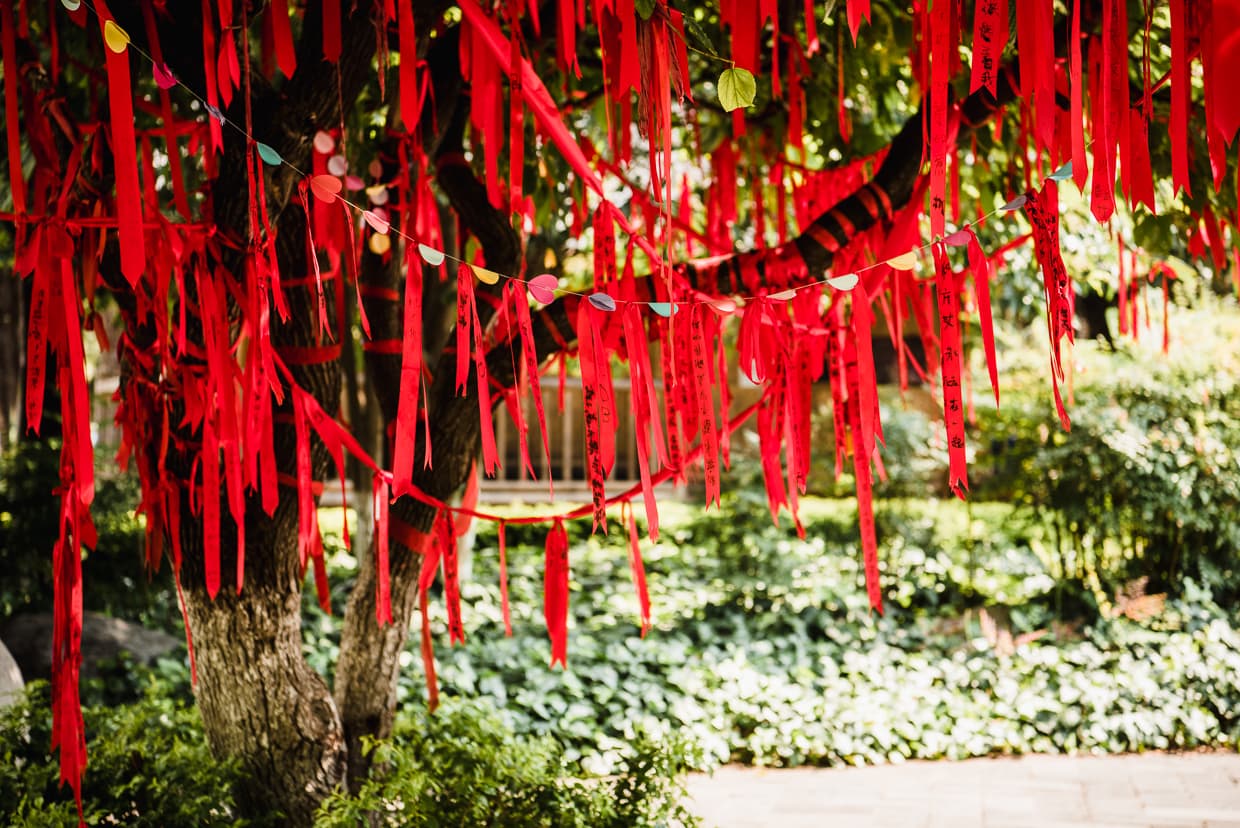
What is the Yunnan Ethnic Village
The Yunnan Ethnic Village is a cultural park in Kunming, China that is dedicated to honoring and educating people about the many Chinese minority ethnicities that live in Yunnan Province. The park is actually a collection of 26 villages, representing each of those ethnicities. Each individual village is designed to display the traditional, dress, architecture and customs of its respective ethnicity.
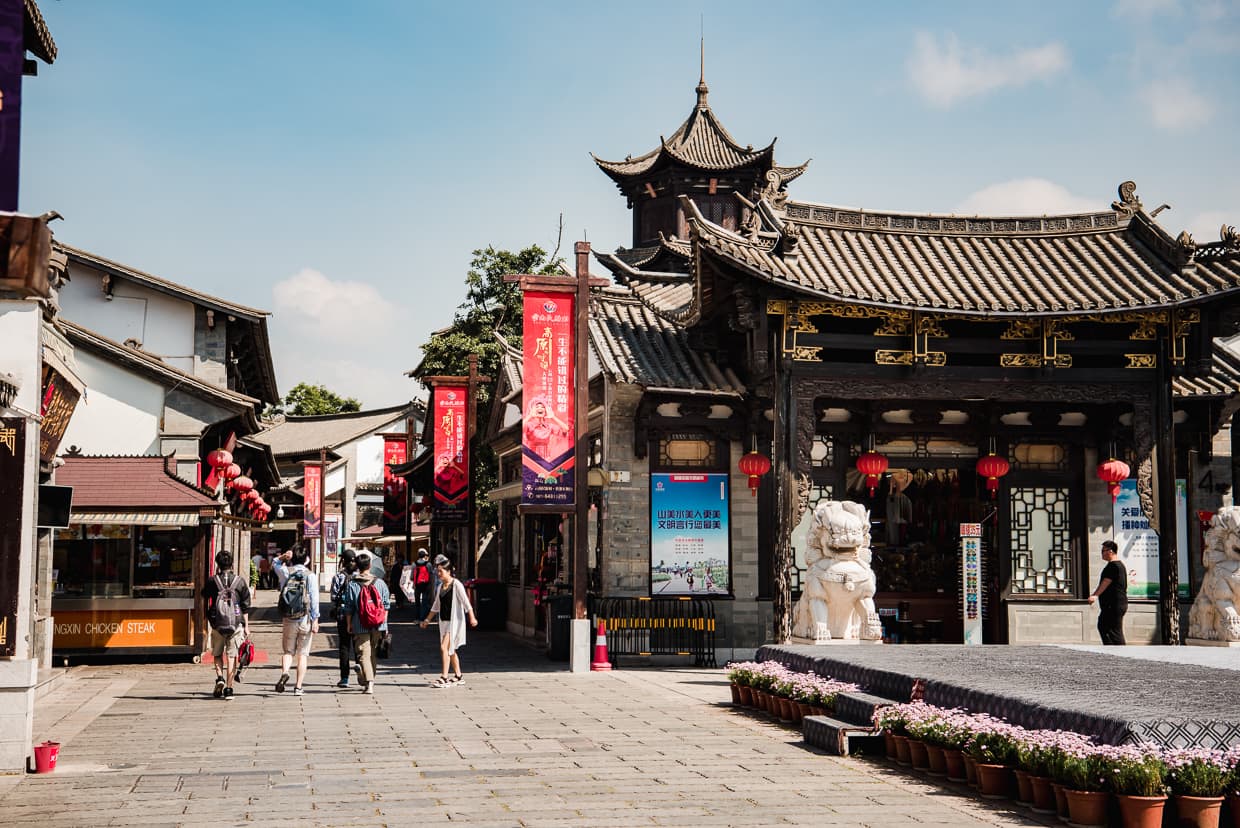
To be clear, it’s not meant to describe how people in those regions live today - it’s more about celebrating the diversity of culture and custom in the region. It’s kind of like those colonial villages in the U.S. where actors wear old clothing and use butter churns, except the ethnicities village represents more than one culture, and the cultures are older.
How to Get to The Yunnan Ethnic Village in Kunming, China
Don’t hire a private car to get to the Yunnan Ethnic Village (Google Maps). It’s a short ride from downtown Kunming, and it’s not like the driver can take you from village to village inside, acting as a guide, he’d just be waiting in the parking lot. Getting there and back should be pretty easy.
Public Transportation
According to the (useless and insecure) official website, the directions are: “24, 73, 44, A1, A9 Road car train”
That’s probably not a whole lot of help, but the general consensus online is that you can get there by bus using the 24, 73 or A1. We considered looking up how close any of those buses came to our hotel, after all, buses are a very inexpensive way to get around Chinese cities. But then we decided that our time and energy were worth more than the equivalent of 3-5 USD, and we decided to just hail a Didi (think Chinese Uber).
Just Get a Taxi or a Didi
If you are a foreigner visiting Kunming (which you probably are if you are reading this), then our recommendation is to just hail a ride. It doesn’t cost very much, and it will save you loads of time researching the bus maps, walking to the bus stop, waiting for the bus to arrive, and sitting, staring out the window to avoid missing your stop (if you get on the right bus).
A taxi or Didi is inexpensive enough that it’s well worth swallowing the expense for a one time trip like this. If you have the Didi app (Apple | Android) (see our list of must have apps for living in China), then that is the best way because it saves you the trouble of dealing with language barriers. If do use this method, be aware that the Didi app includes individual portions of the park as possible destinations, so make sure you select the following address:
Yunnan Ethnic Village Parking Lot
1310 Dianchi Road, Xishan
If you decide to take a taxi, but you don’t speak Chinese, you can show this text to the driver:
云南民族村
There should be plenty of taxis and Didis around when you are ready to leave. Just don’t forget to write down the name of your hotel. The concierge should be able to help you by writing it down or even saving the address in your Didi App.
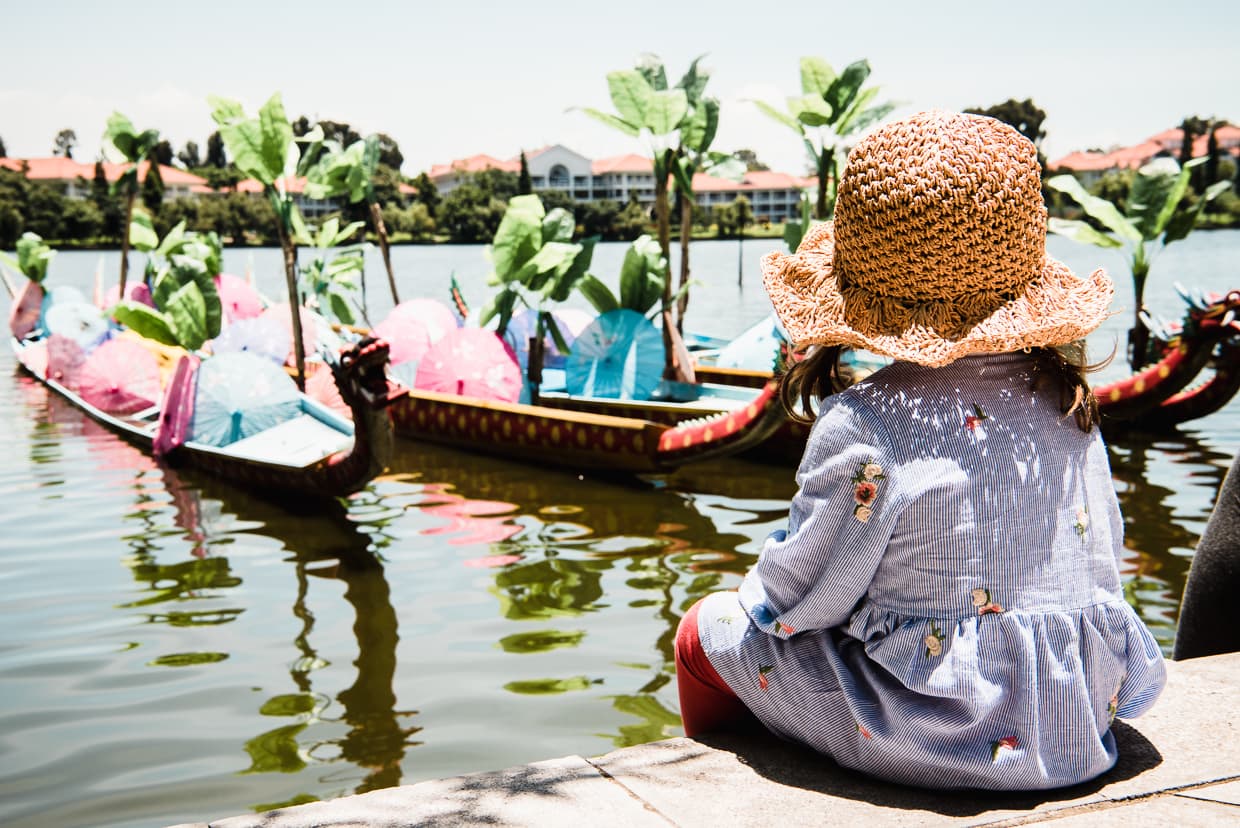
No matter how you decide to get there, we’d advise you to keep a navigation app open to make sure your driver is following the correct route, and so you will know if you are getting close. If you are using Didi, this is particularly easy because it will be open automatically with the route, destination, and estimated travel time remaining. Baidu’s navigation app is popular and functional, but it doesn’t have English. If you prefer Google Maps, you will also need to download a virtual private network app (VPN) because all things Google are banned in China. For a brief explainer on VPNs and how they bypass the “great firewall”, read our review of ExpressVPN for travel.
Any of those methods should put you in the parking lot, and you just need to head toward the gate in the picture below and buy a ticket.
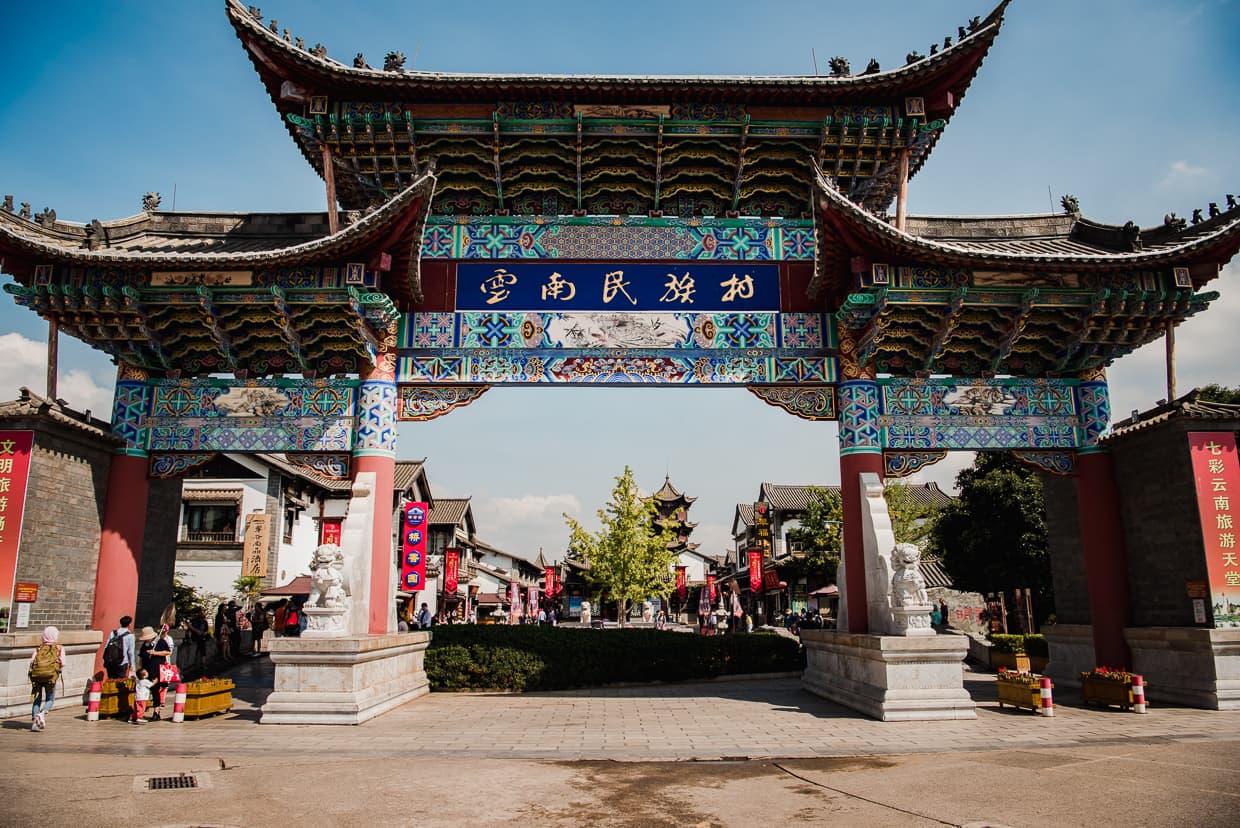
Hours and Prices of the Yunnan Ethnic Village
Hours:
The Ethnic Village is open from 8:00 to 18:00… I think. There is much confusion on the internet about the correct opening hours. I’ve read opening times ranging from 8:00 to 8:00, and closing times from 16:30 to 20:00. But 8:00 to 18:00 is the most common. If you play it safe and plan on getting there by 8:30 and wrapping up by 16:30, you will have plenty of time anyway, so don’t get too stressed.
The confusion probably exists because the (useless and unsecure) official website doesn’t have hours posted! Update: Dannie tells me that if you can read Chinese, the website does have the hours, and it says 8:00 to 18:00, though it changes with certain holidays.
Price:
Tickets are 90RMB ($13) for adults. Kids under 1.2m (3’10”) are free. Students and other special groups are 45RMB.
TIP: If you are visiting as a family, it’s better to buy your tickets in person than online, despite any language barrier you might face. That’s because they offer various group packages. We bought a family package which included 2 adults and 1 child for 360RMB and it gave us access to the park, the indoor dance performance, and the elephant show. There was a cheaper package that didn’t include the elephant show, and we wound up wishing we’d done that instead (I’ll explain later).
How Long Does it Take to Tour the Yunnan Ethnic Village?
Though we wouldn’t necessarily recommend it, it might be possible to visit the park in half a day. You could pick a few of the more prominently displayed ethnicities (some of them have greater representation than others), look on the map to see where they are, and then bypass everything else. Or you could do a fast walkthrough, glancing at each of the different villages as you walk past.
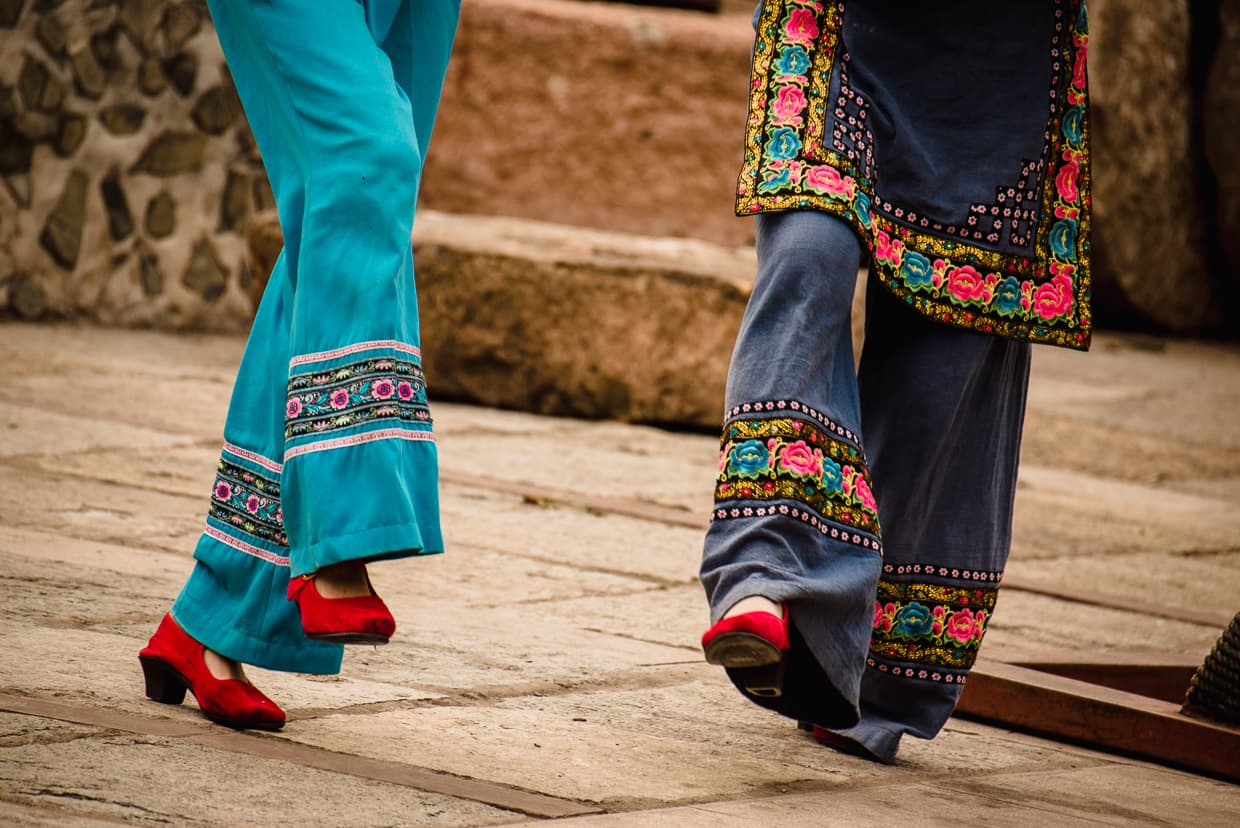
But honestly, you are more likely to enjoy your visit if you slow down, relax, and allow yourself a full day to experience it. There’s a lot more to do than just look at things, and given that some of the performances are pretty good, it’s worth making time for them as well. You can purchase meals and snacks - both generic and ethnic - and of course there is plenty to learn if you are willing to stop, read, and listen as you explore. During our recent visit, we were there from about 9:30 in the morning until 4:00 in the afternoon.
Our Favorite Villages
The Tibetan Village
Yunnan borders Tibet, so it’s no surprise that Tibetan people and culture have made their way into the Province over the centuries. Through the architecture and the distinctive banners, we were actually able to recognize which village this was before we even saw the signage.
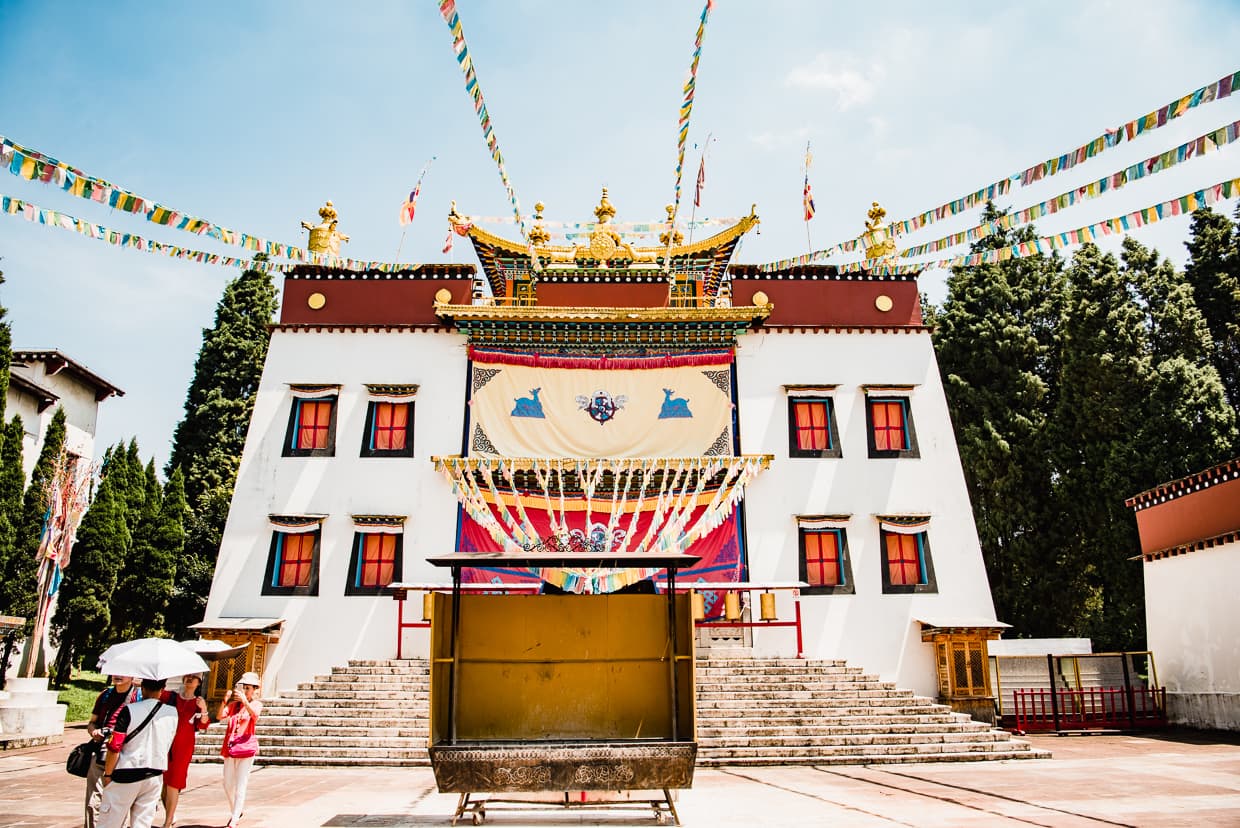
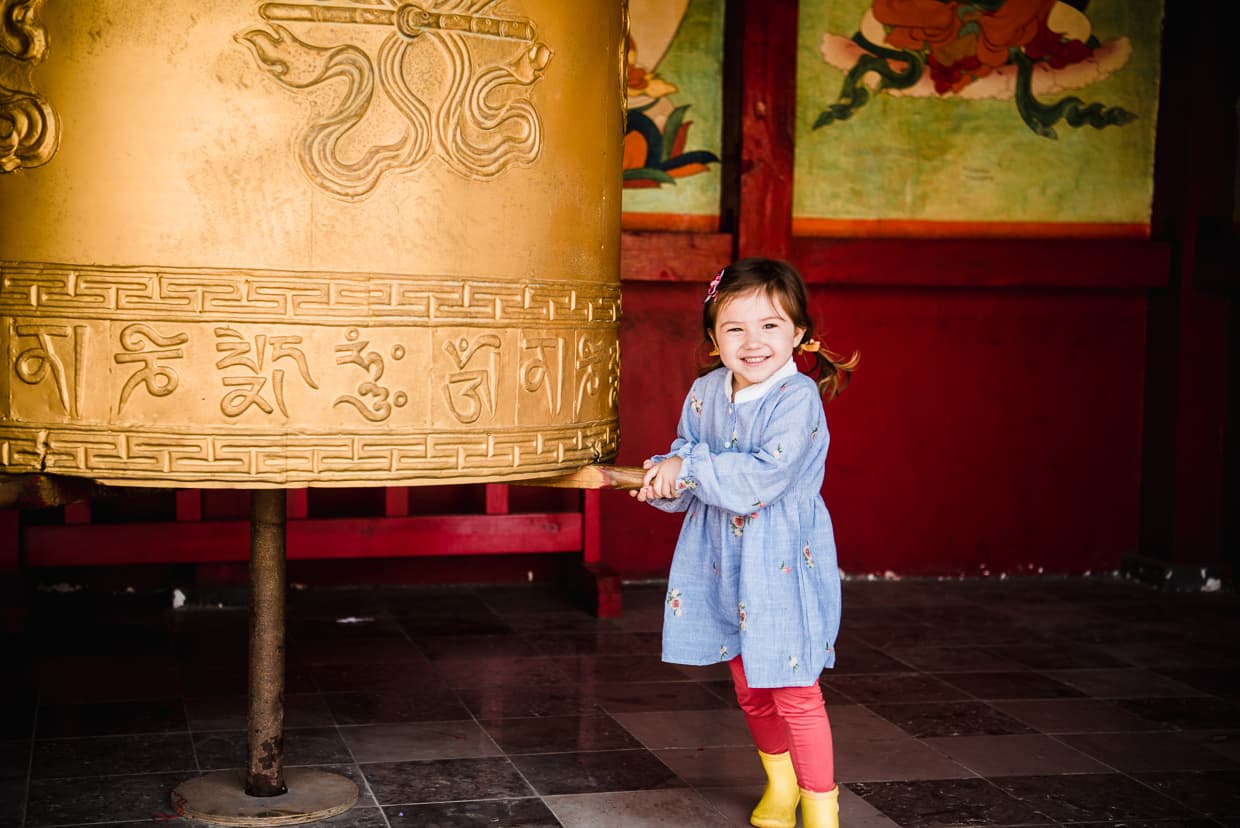
We knew the Tibetan village would be good photography, but the main reason we were drawn in was that we were getting hungry, and we figured if any culture would have some vegetarian food for us, it would be the Tibetans. Sure enough, there was a tea house within where we tried a traditional butter milk tea served a with sweet powder made from peanuts and shuyoucha (you pour the tea over the powder slowly while forming it into balls and eating it. It wasn’t quite enough to fill us up, but the ambiance was wonderful.
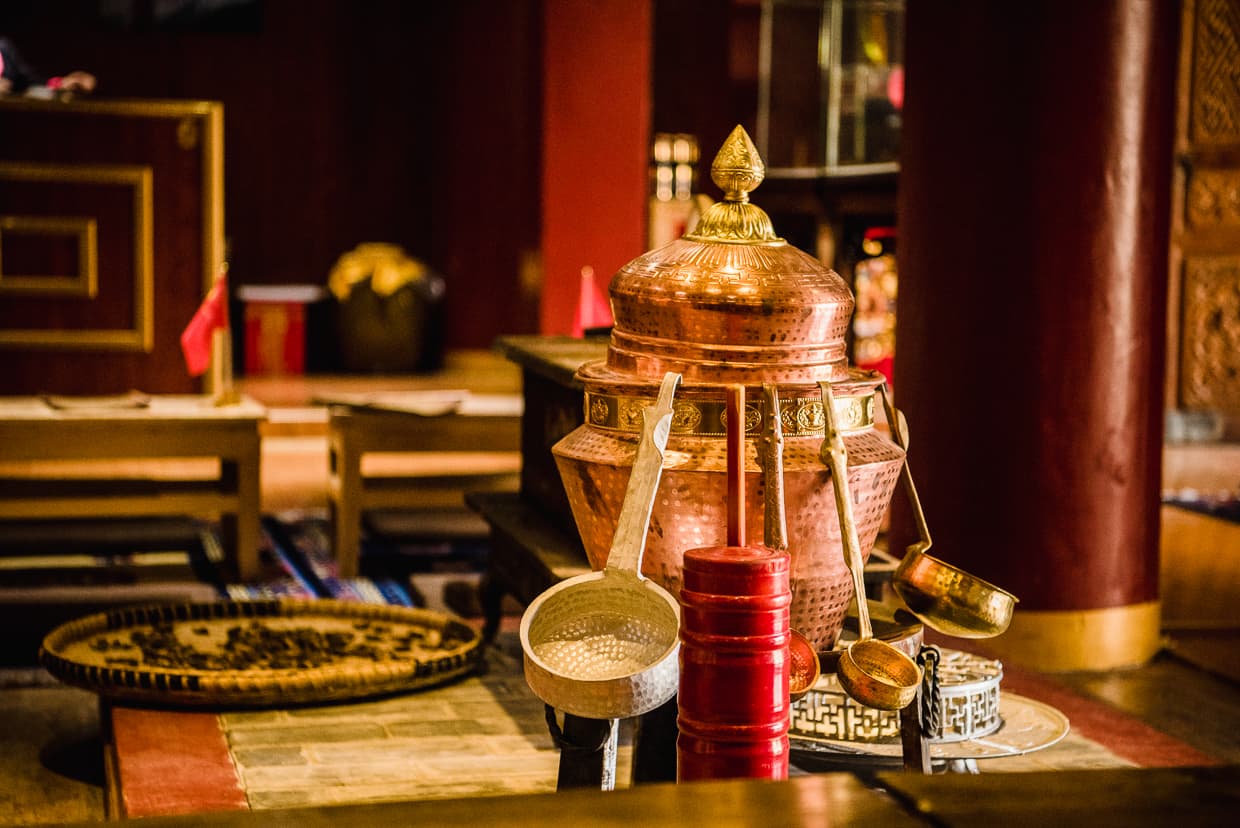

Outside, there were various prayer wheels for visitors to turn as they explored, and a shrine in front of a temple. It was really pretty, and it reminded us of our visit to Lugu Lake back in 2013.
The Bai Village
As I mentioned earlier, our current home in Dali, China is steeped in Bai culture. When we got to this village - probably the largest one in the park - we recognized everything from the clothes to the architecture. It was a little bit surreal to feel like we were walking through our own neighborhood in a museum.
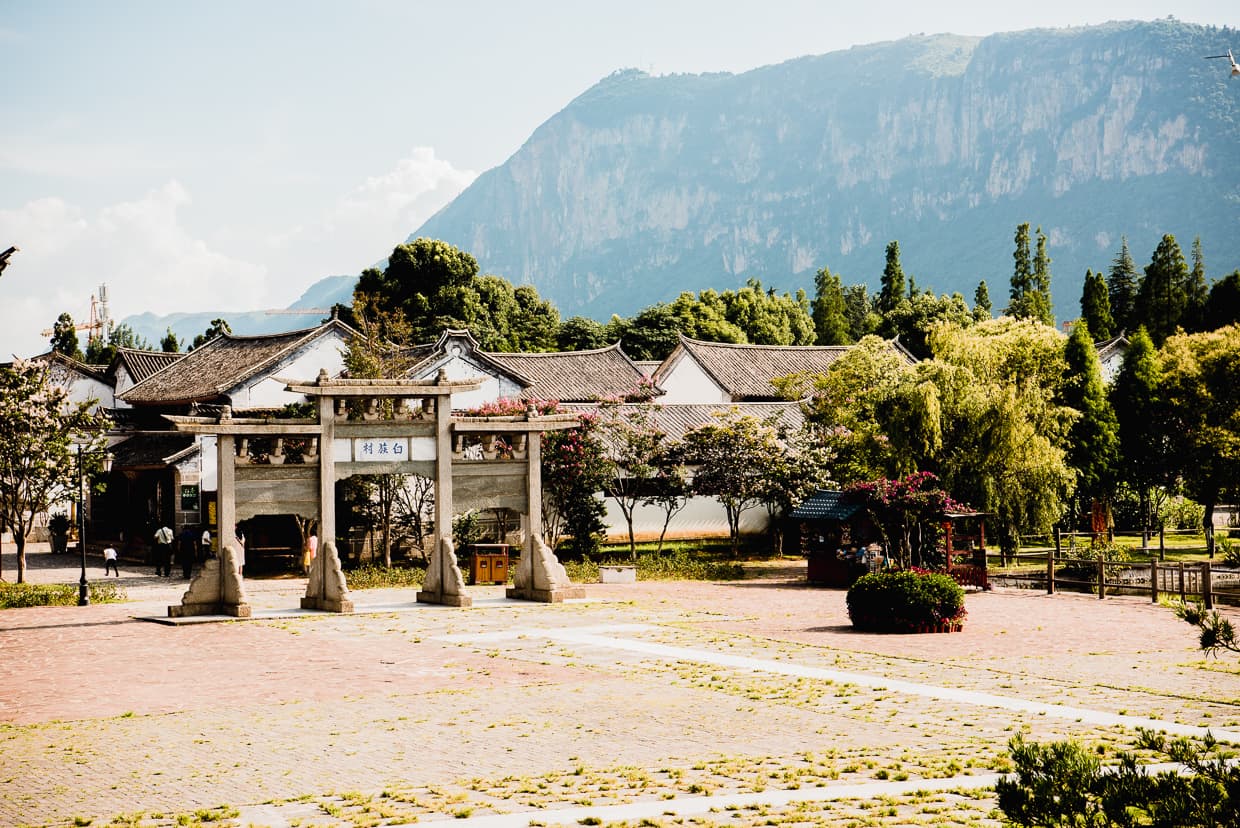
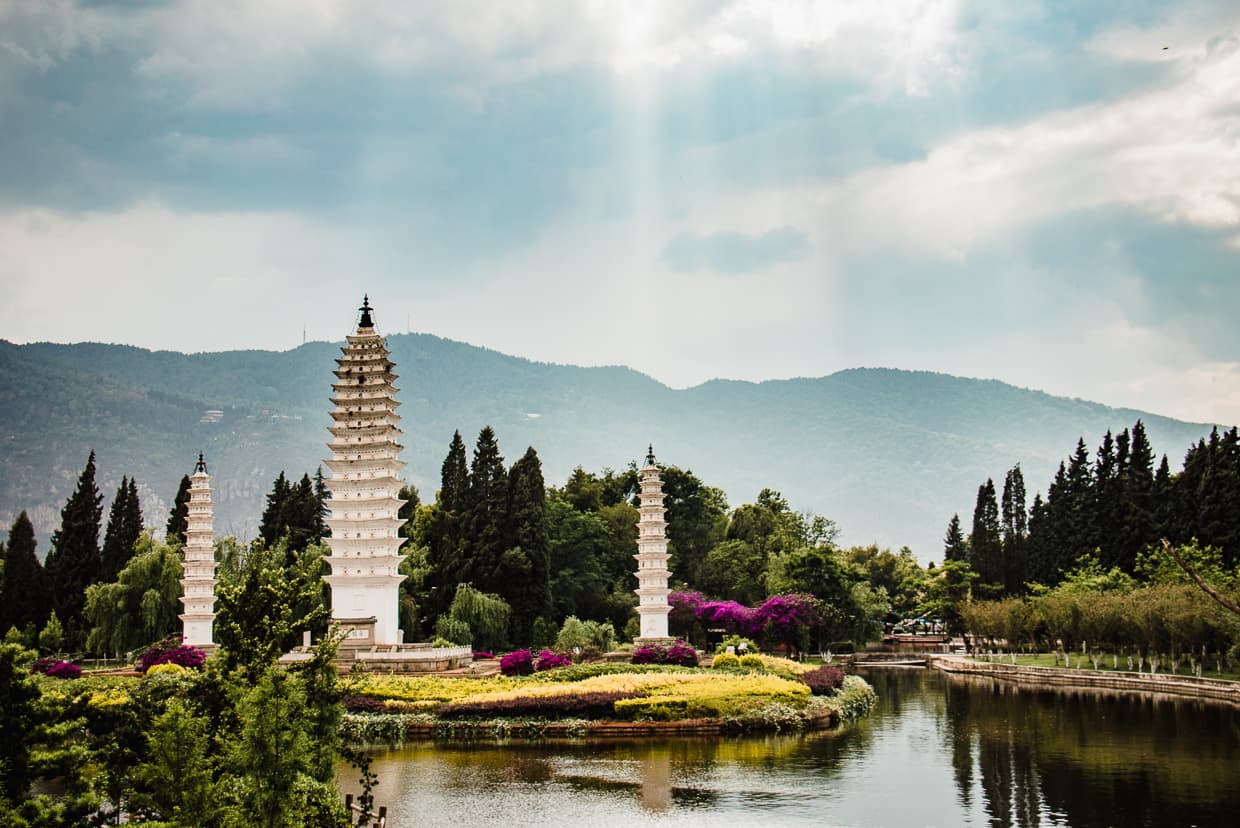
Hilariously to us, one of the biggest draws in the Bai village is the model of the Three Pagodas, possible the most iconic landmark in Dali… which we still have not visited despite living here for about eight months. We could literally walk to the real thing, but we now officially have more photos of the model.
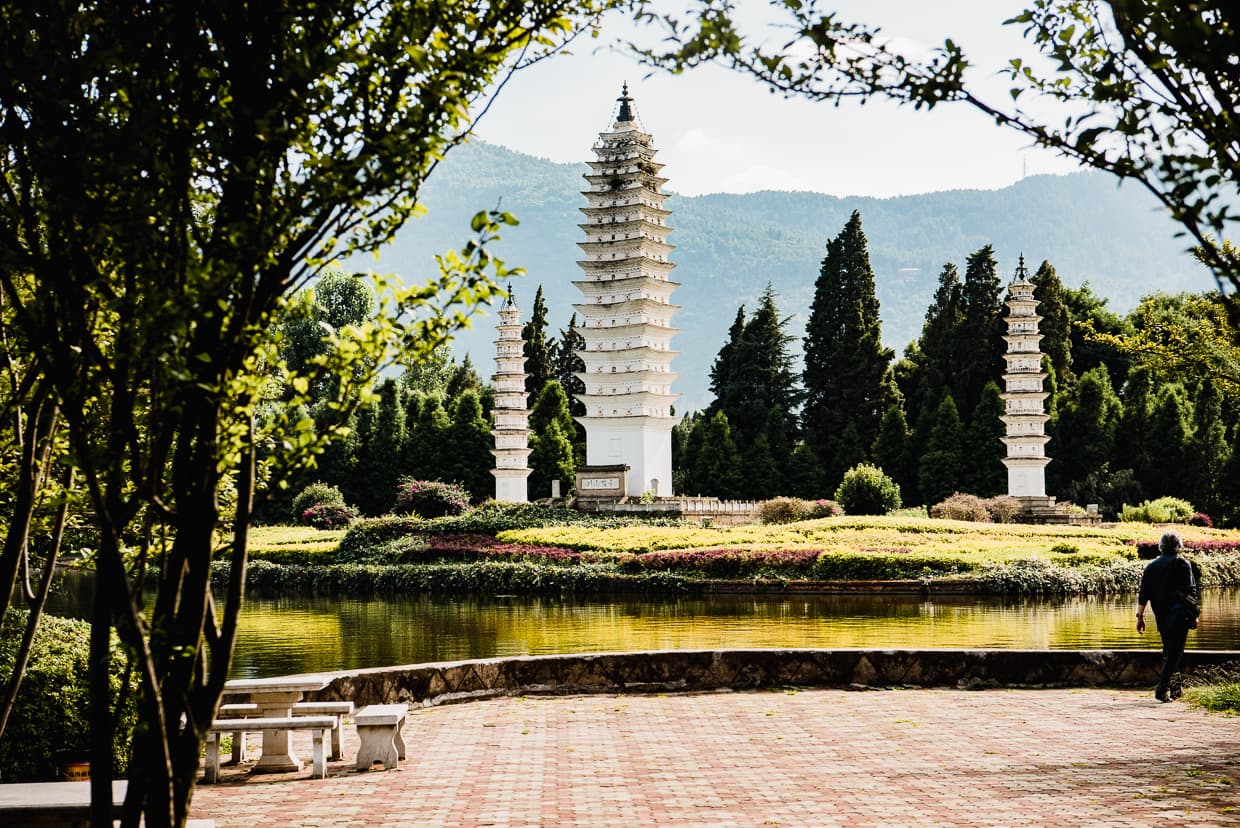
We happened to arrive in the Bai village just in time for a song and dance demonstration. Lisa loves dancing, and after the performers finished singing, she was delighted when they walked down to the stage to dance in circle with the children. She could literally do this all day.
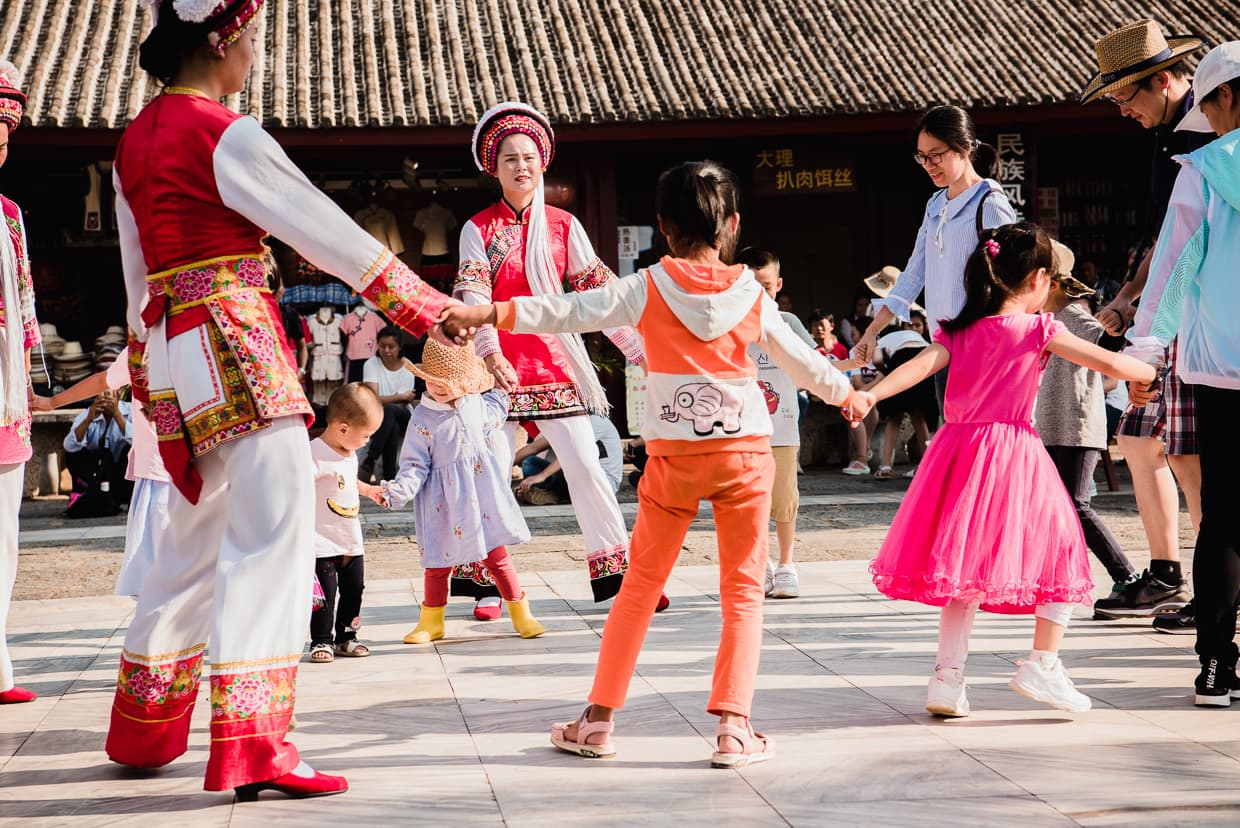
Having seen the real thing, we can confirm that the souvenir shops in the Bai village are an accurate representation of the souvenir shops in Dali. So if you were planning to visit Dali purely for the cheap souvenirs, you can just go to the ethnic village instead.
The Manchurian Village
Dannie is part Manchurian, which means Lisa is part Manchurian too. They don’t make up a huge part of the population of Yunnan, and their village at the park isn’t huge, but we wanted to see it anyway. For one thing, we wanted to dress Lisa up in the famously beautiful traditional Manchurian clothes.
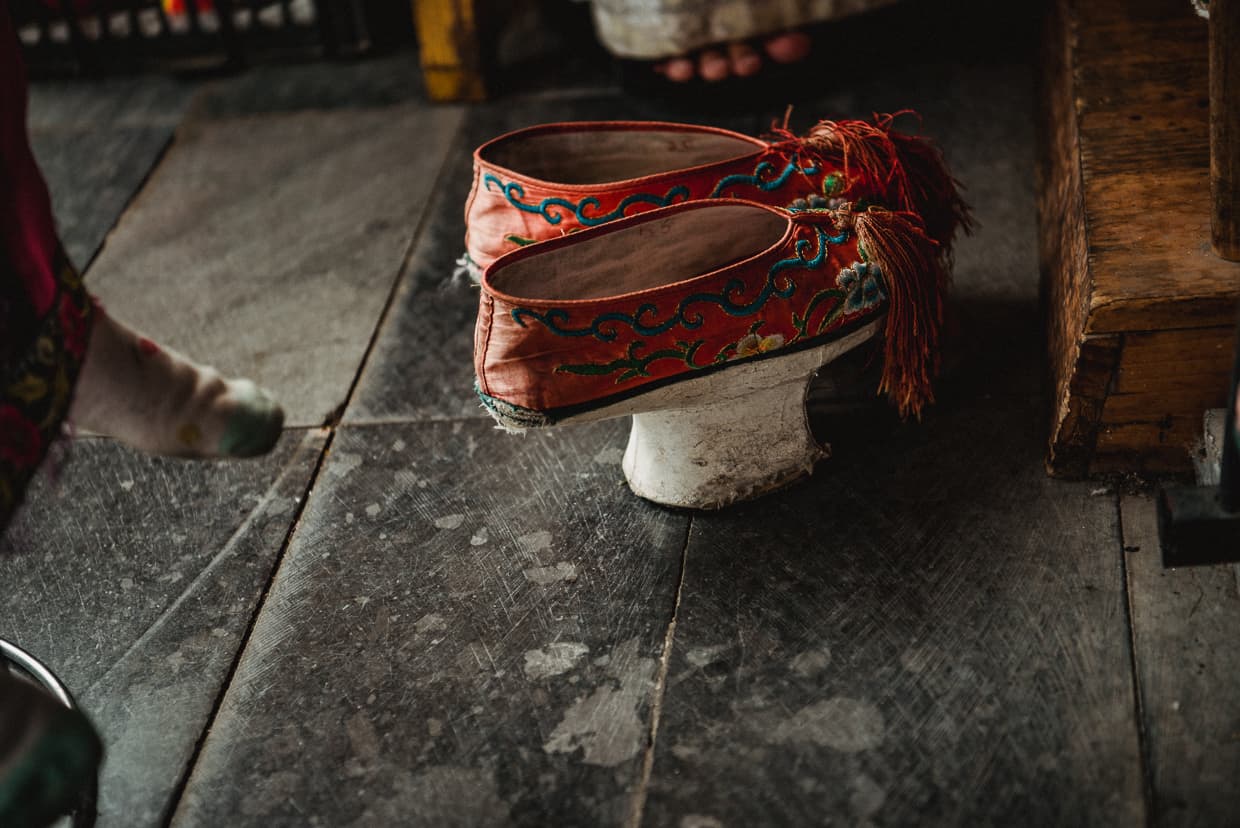
It was pretty cheap, and it was even cuter than we expected. Lisa couldn’t quite balance on the tall shoes, but the dress was also a little too big for her, so it covered up her yellow boots (mostly) and it all worked out. Her favorite part was waving the handkerchief.
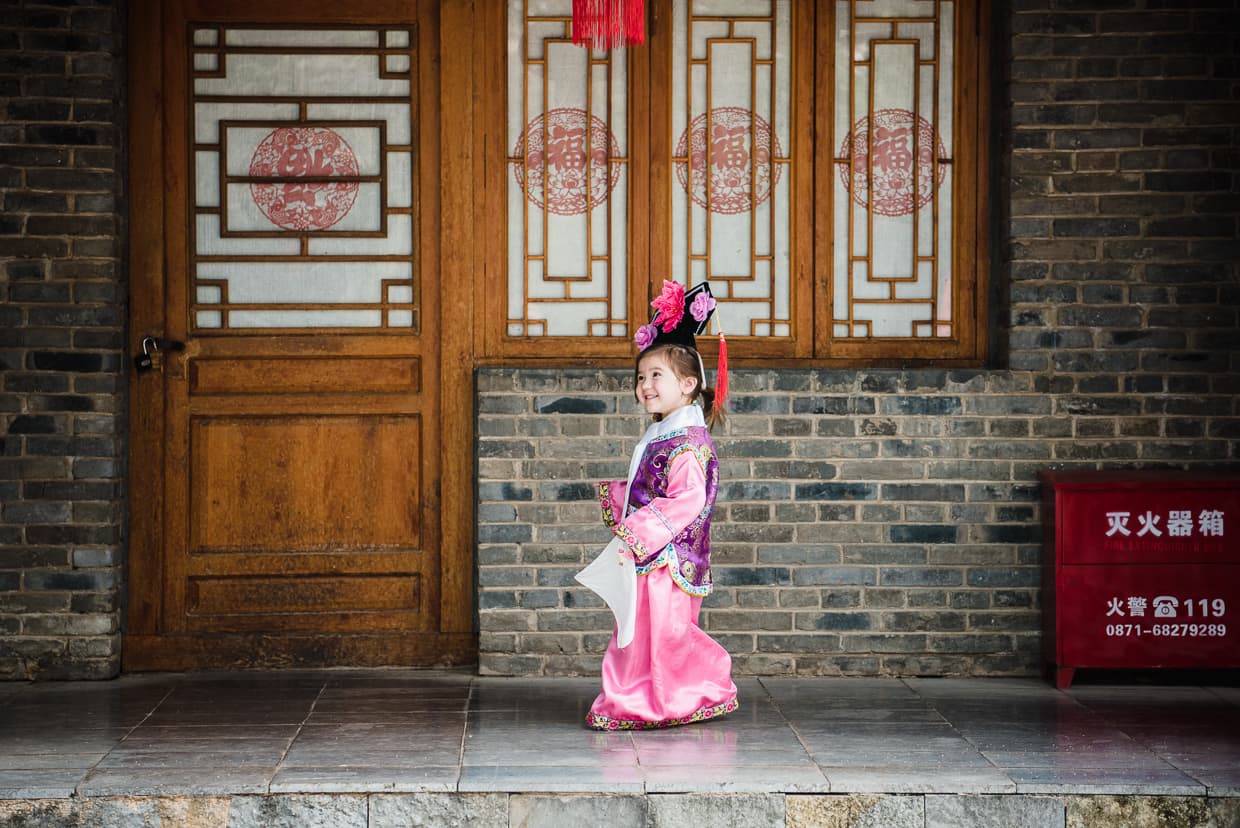
The Great Wall of China wasn’t enough to keep the Manchurians out. But with fashion like this, who would want to?

If you’re excited about taking pictures of your kids while you travel, you might consider having a look at my e-book, Easy Manual Mode Photography, so you’ll know just how to get the image you’re imagining when the time comes.
The Dai Village
Since the whole reason we were in Kunming this time was as a layover on our way to Bangkok, Thailand, we thought maybe the Dai ethnicity, with its roots in Thailand and Laos would give us some idea what we should expect. After seeing the grass roofs of the huts in the ethnic village, we got the feeling that it wasn’t very much like Bangkok at all. Oh well.

On the other hand, it was one of the prettier areas in the park, with nice shady paths, a coin fountain, and many, many colorful umbrellas. Also, there were peacocks, which Lisa recognized with great excitement from her books.

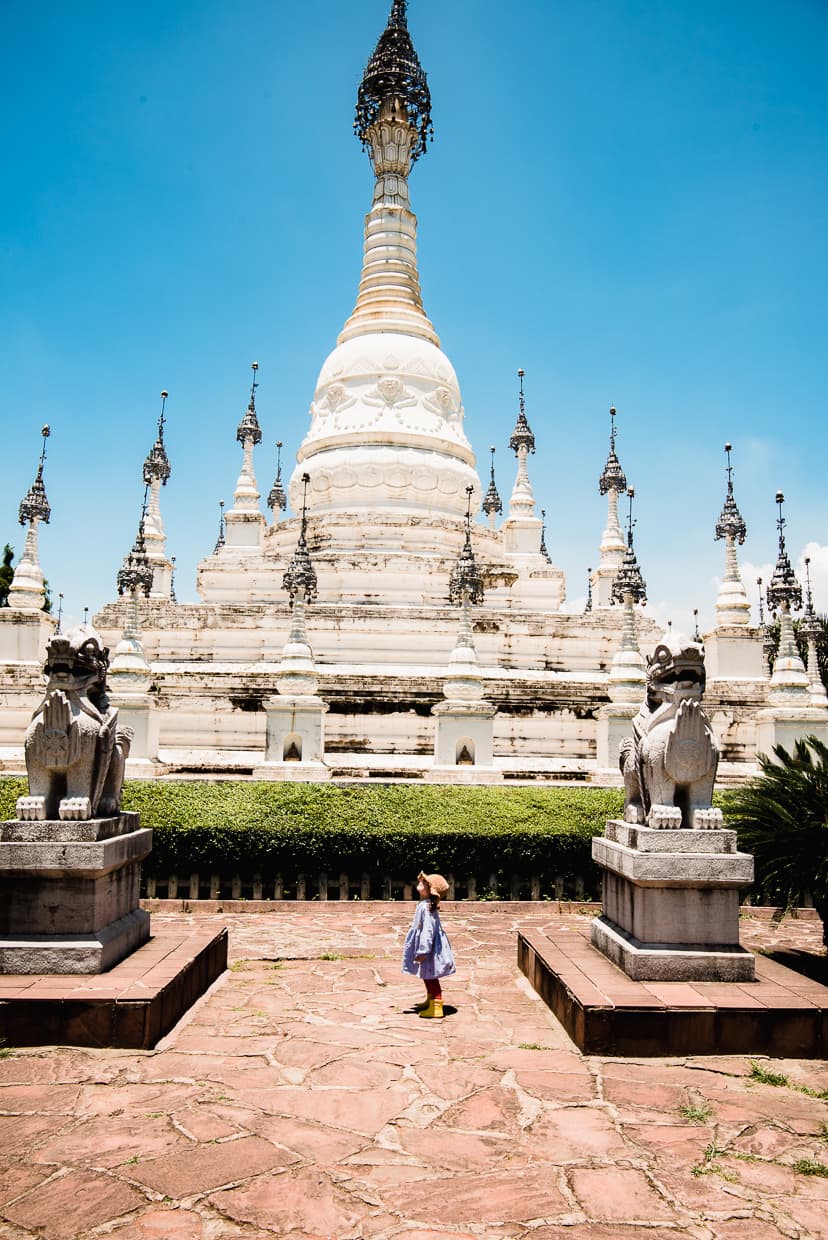
The main attraction, though, might have been the giant white Buddhist temple, covered in Buddha figurines and surrounded by flowers and dragon boats. Lisa waited patiently for her turn to have her picture taken in front of it, and when she finally got up there, we laughed to see her striking some of the poses that she’d seen the other visitors do.
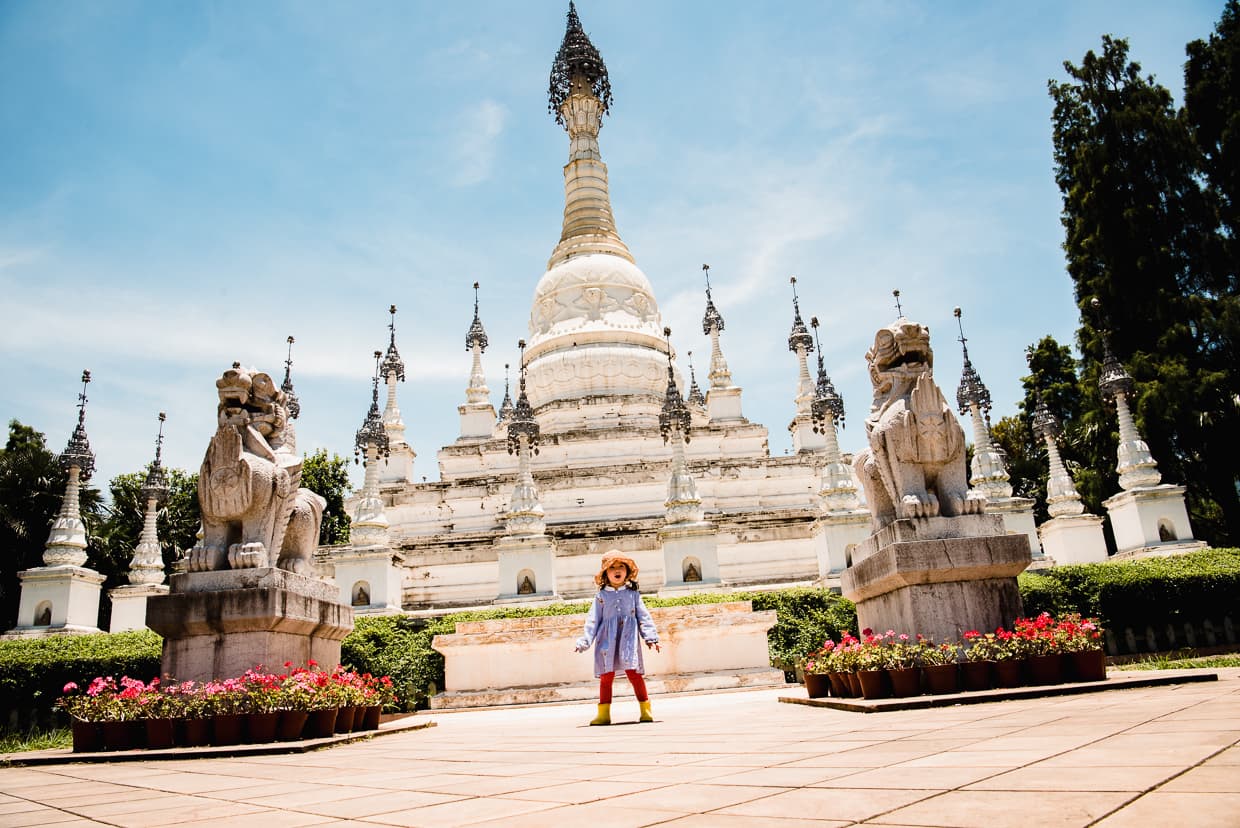
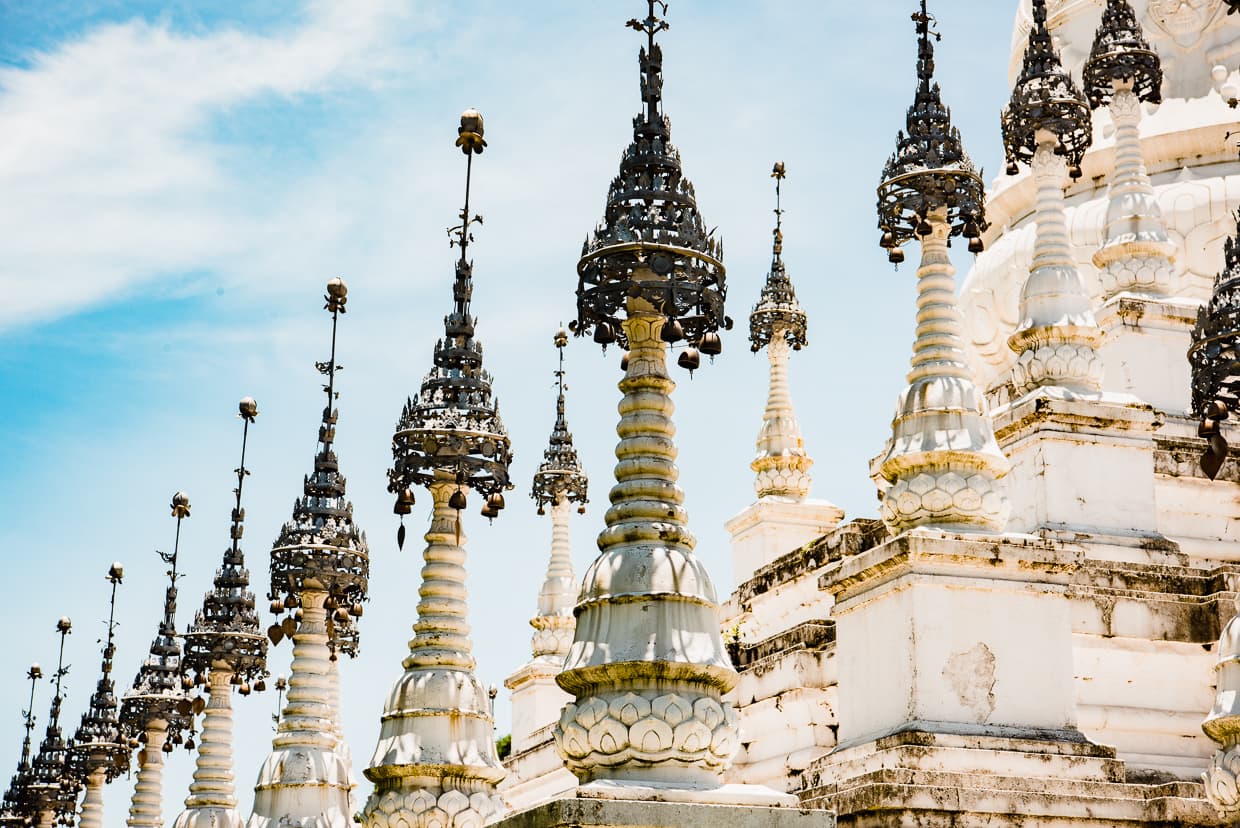
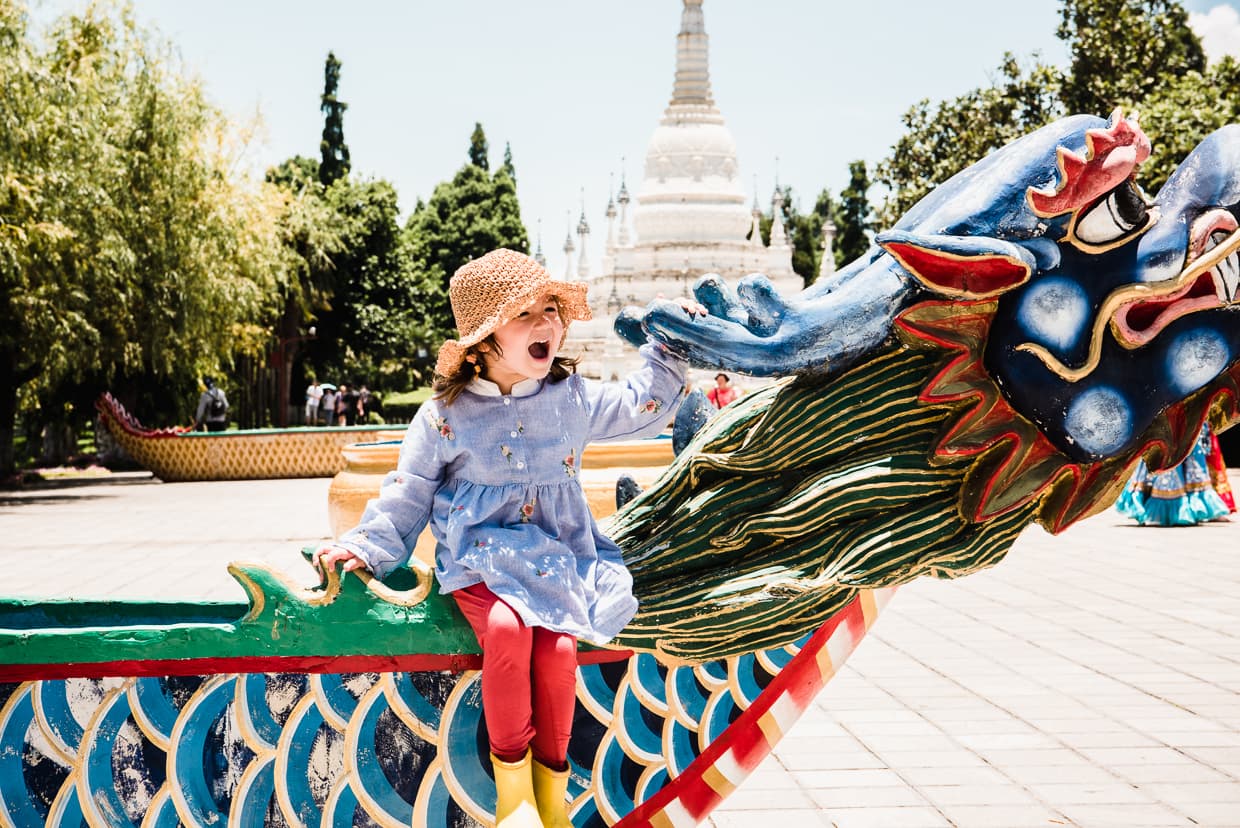
Our Favorite Activities in the Yunnan Ethnic Village

Various Ethnic Performances
Throughout the park and throughout the day, you can catch live performances in some of the villages. You could either seek them out and plan your route through the Yunnan Ethnic Village around catching the shows, or you could do what we did and just relax, counting any shows you see as a little treat.
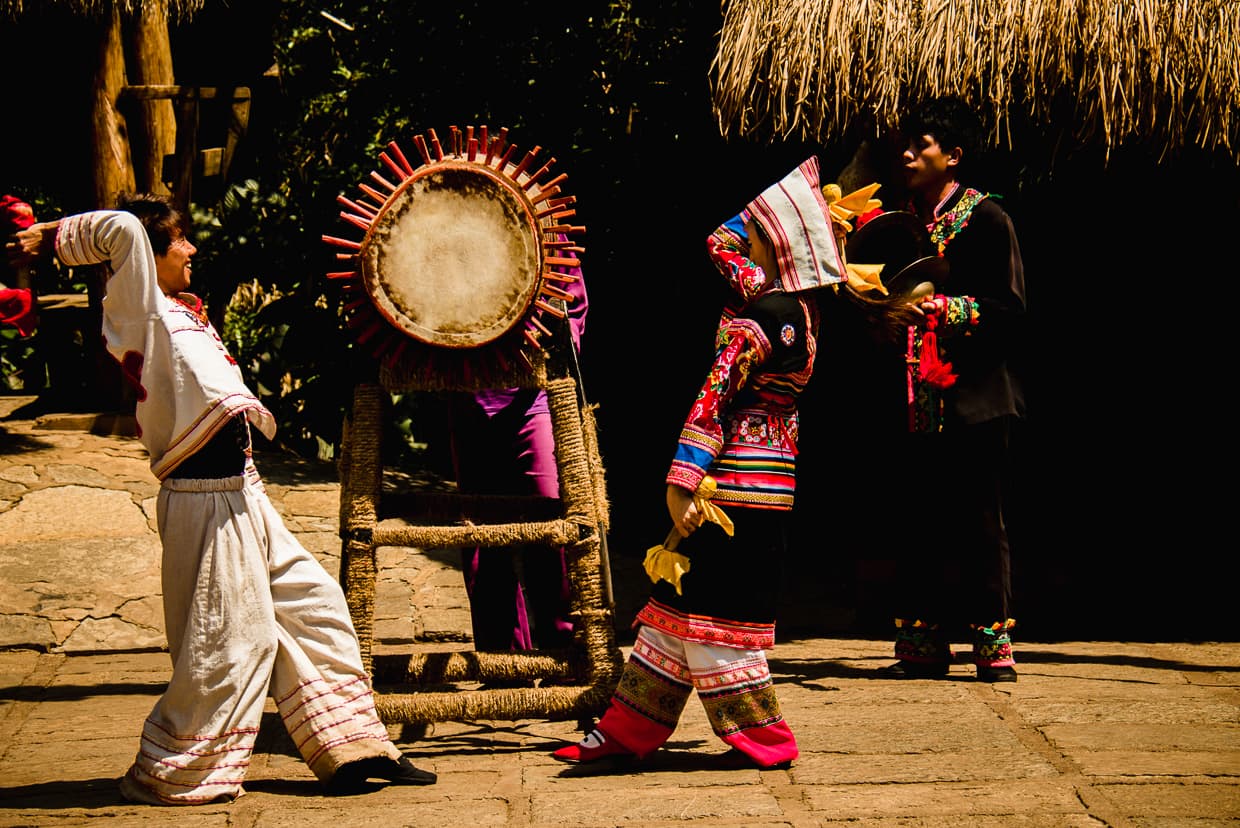
Here is the schedule of shows (as translated from the website in October, 2018):
Achang village courtyard (阿昌)
9:30 - 9:50
11:30 - 11:50
16:10 - 1630
Wa Village square(佤族)
10:30 - 10:50
12:20 - 12:40
16:00 - 16:20
Yi village outdoor stage (彝族)
10:40 - 11:00
13:20 - 13:40
16:10 - 16:30
LaHu (拉祜族)
10:40 - 11:00
13:20 - 13:40
16:10 - 16:30
Knife climbing stage 刀杆广场(大峡谷四民族) Next to Miao village
10:10 - 10:30
11:20 - 11:40
17:00 - 17:20
Bai village outdoor stage 白族
10:30 - 10:50
12:40 - 13:00
17:00 - 17:20
Hani village tea house 哈尼族
10: 50 - 11:10
16:30 - 16:50
Lisu river side square 傈僳族
11:00 - 11:20
15:50 - 16:10
Mosuo village courtyard 摩梭族
11:30 - 11:50
16:30 - 16:50
The Big Indoor Dance Show
This is awesome.
Once a day, all the performers from the various villages leave there posts and make their way to the big indoor theater near the Lisu village. They perform a show together that has a lot more spectacle and choreography than the individual performances you might see for free throughout the rest of the day. It starts with a guy banging on a huge drum, and the stage is a complex and ever changing platform of moving, color shifting mountains, fog machines, light displays, stairs and more.

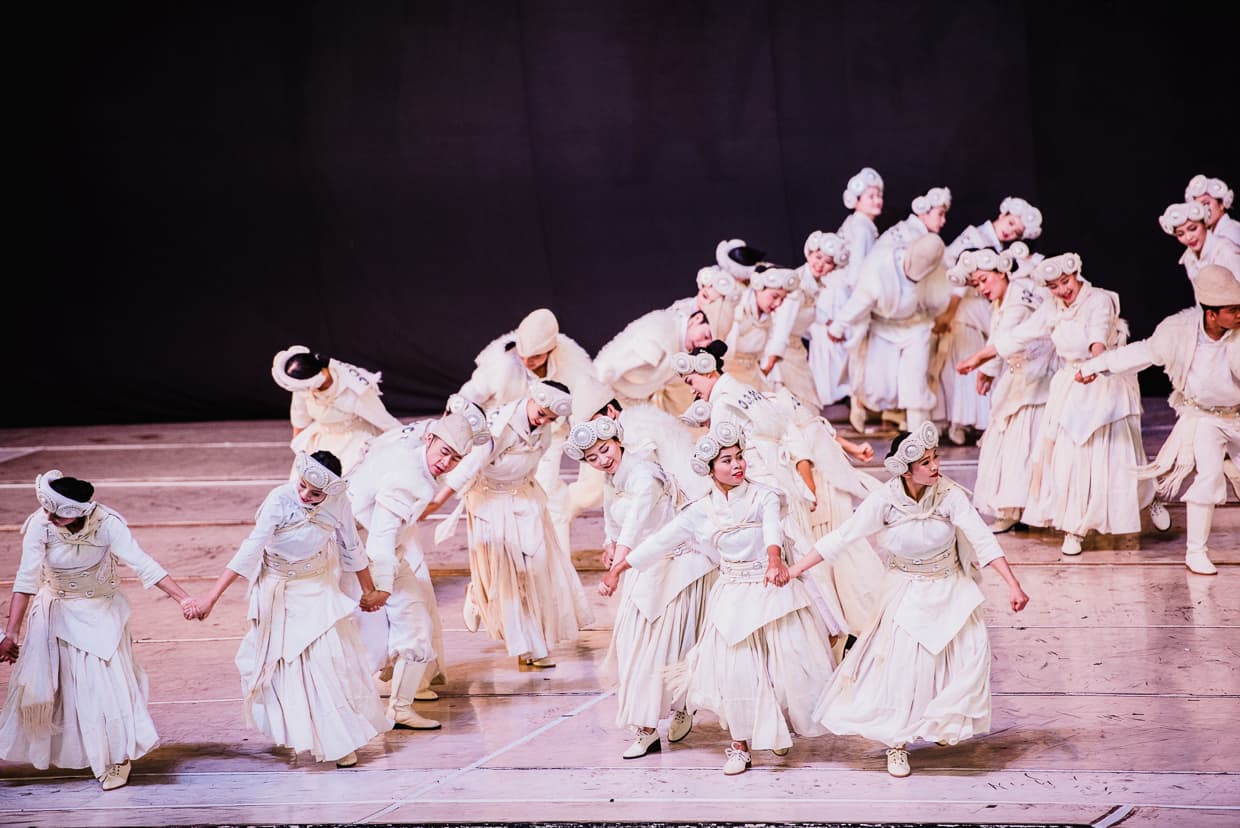
The show takes almost an hour, but it’s engaging enough that even our two-year-old girl was captivated throughout. Sure, she talked and made all kinds of noise, but the performance was so loud that no one could have possibly noticed. What a blast! Another benefit is that it takes place during the hottest part of the day, so it’s a chance to get out of the sun and cool off a little.
You can get inside at 14:30, and the show lasts from 14:40 to 15:20.
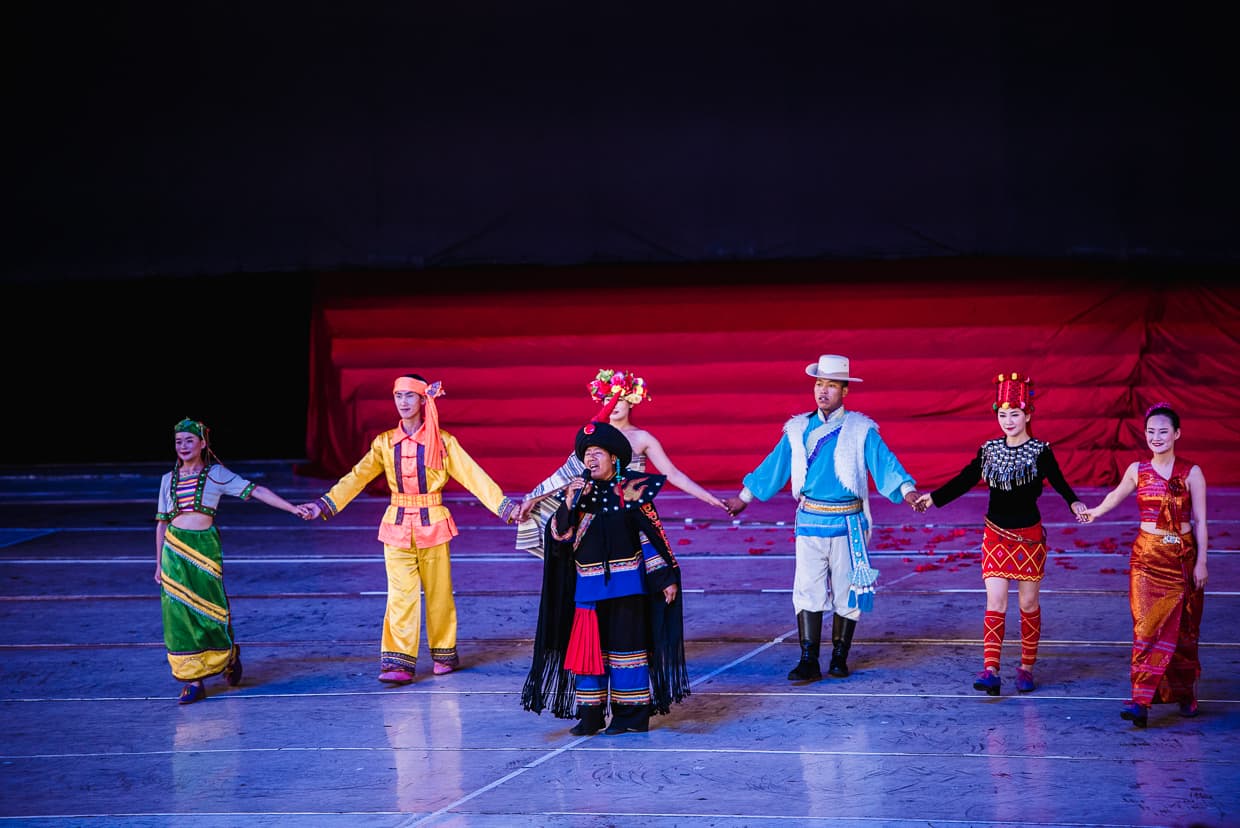
The Zip-Line
If you really want to enter or exit the Yunnan Ethnic Village in style, there is a zip-line that connects the Tibetan village to a platform a little bit to the west of the main park entrance. The line hangs between two towers, and goes across a fairly wide canal. Lisa was too young to use the zip-line, and Dannie doesn’t like heights, which meant I was going to have to try it alone. This meant I couldn’t do a one way trip, which would have involved abandoning my family on the far side of the canal.
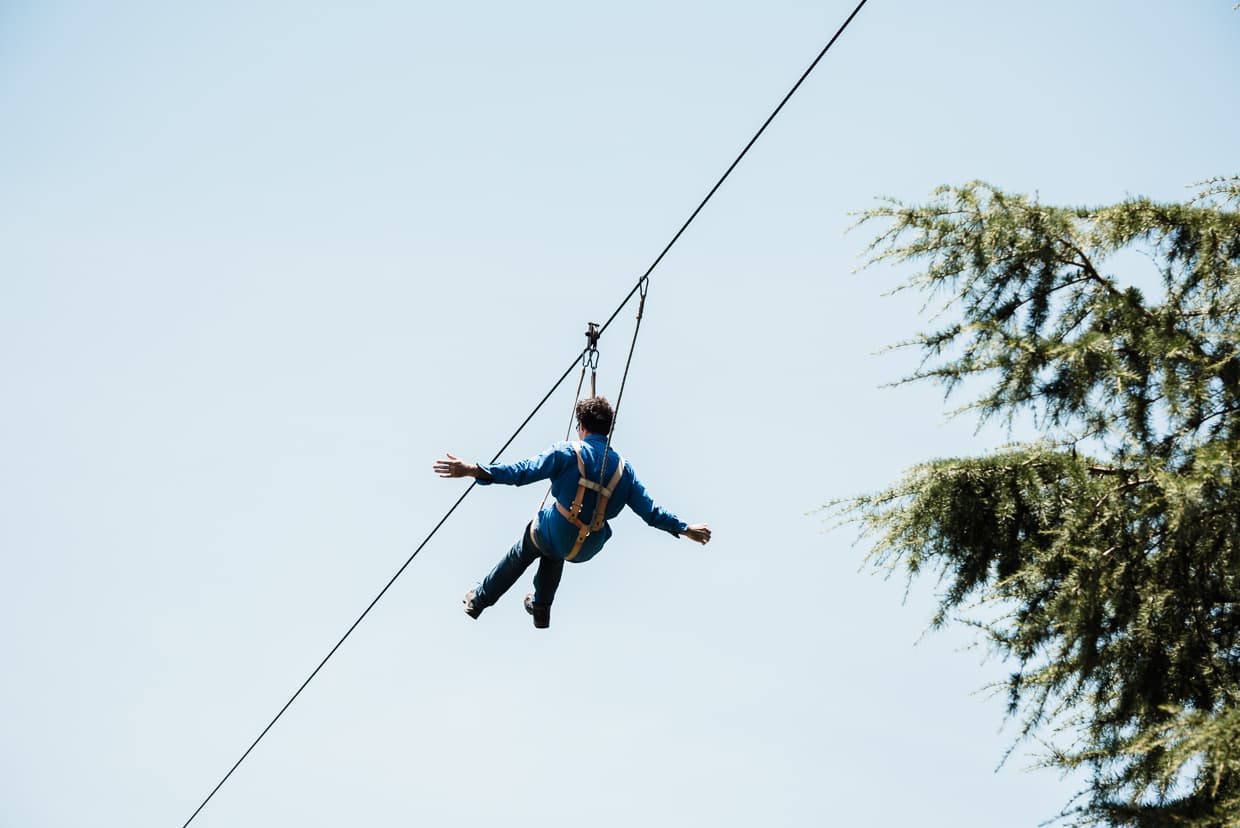
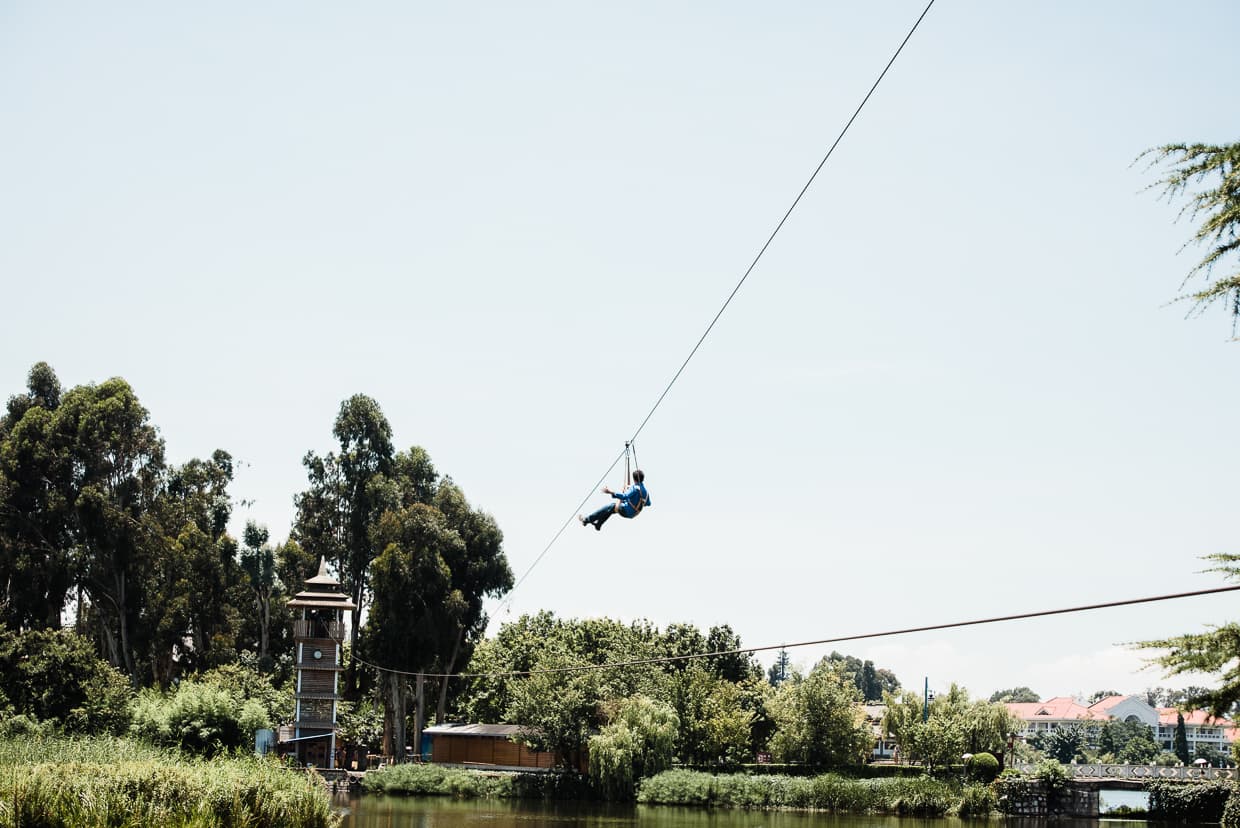
I wish I remembered the exact price, but I think it was the equivalent of around $10-$15 for a round trip. That sounded like the cheapest zip-line I would ever have a chance to try. It was my first time, and I thought it was pretty fun. The men who helped me in and out of the harness knew at least enough English words to get me buckled up safely and tell me not to do anything stupid like reach up and touch the cable during the ride.

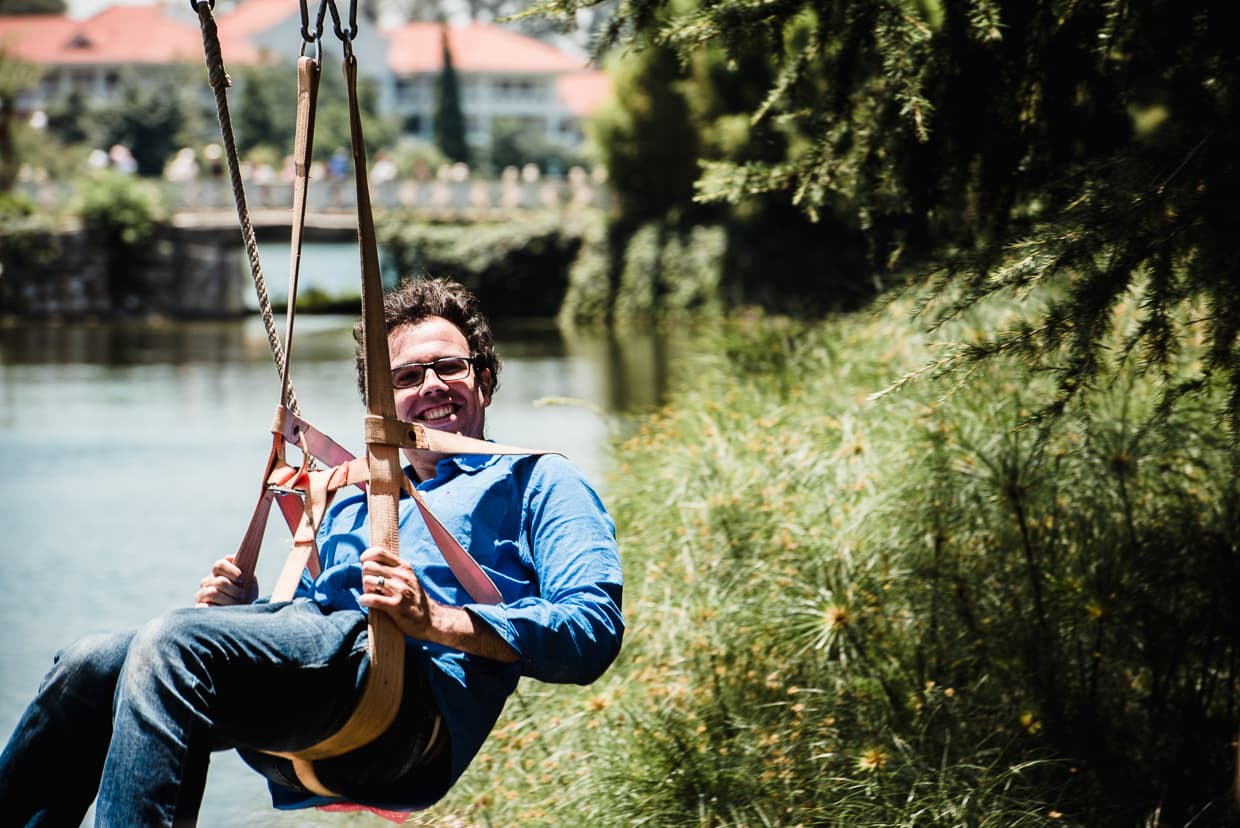
The zip-line was a lot faster than I expected, and when I was coming in for a landing it sure felt like I was going to go splat. But there was some kind of mechanism for slowing it down at the last second before impact. Luckily Dannie was still able to get a photo of me cringing and bracing for impact.
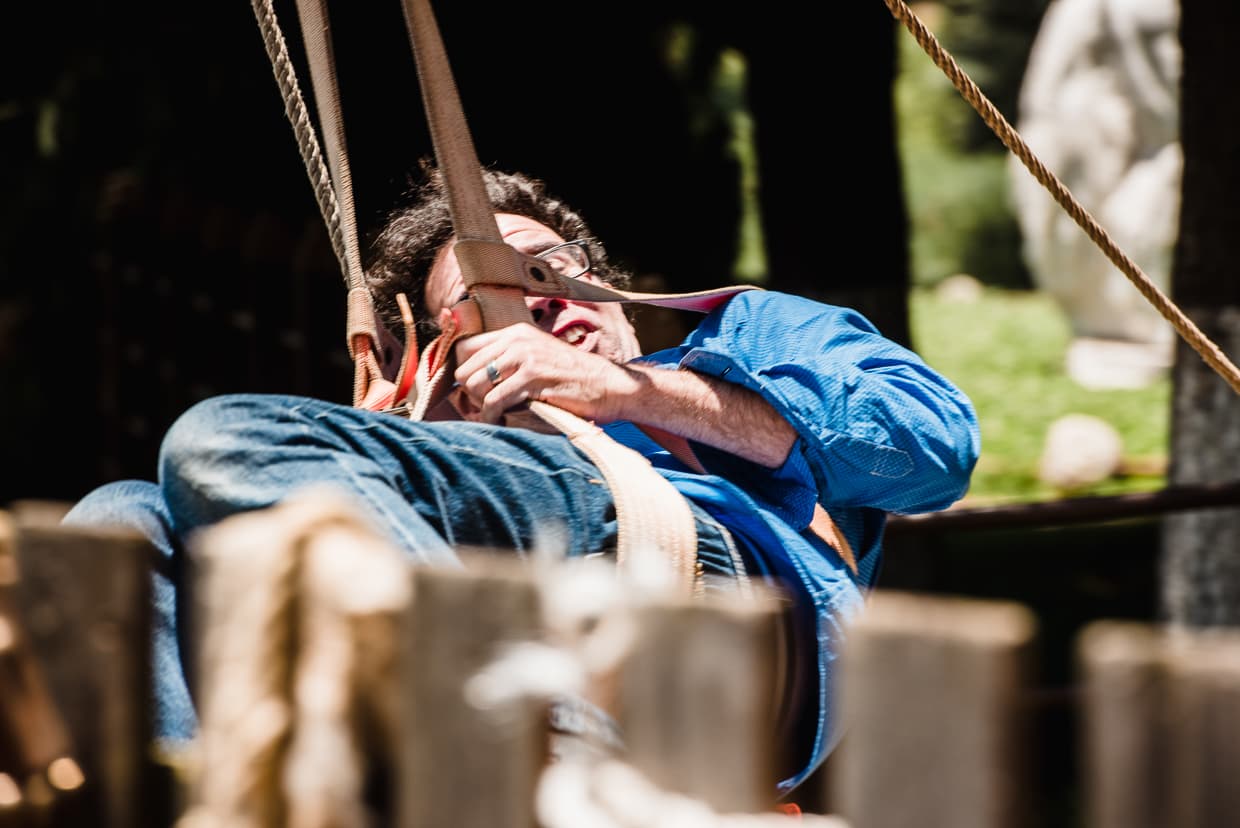
Pancakes
In the Nu village you can buy some traditional buckwheat pancakes called baba. Of course, there are a million kinds of pancakes called baba in Yunnan, and they are all different, so I’m just calling them pancakes since these ones look a lot like American pancakes. The pancakes themselves were actually a little bitter since they were made from buckwheat, but they added honey to sweeten them up a little.
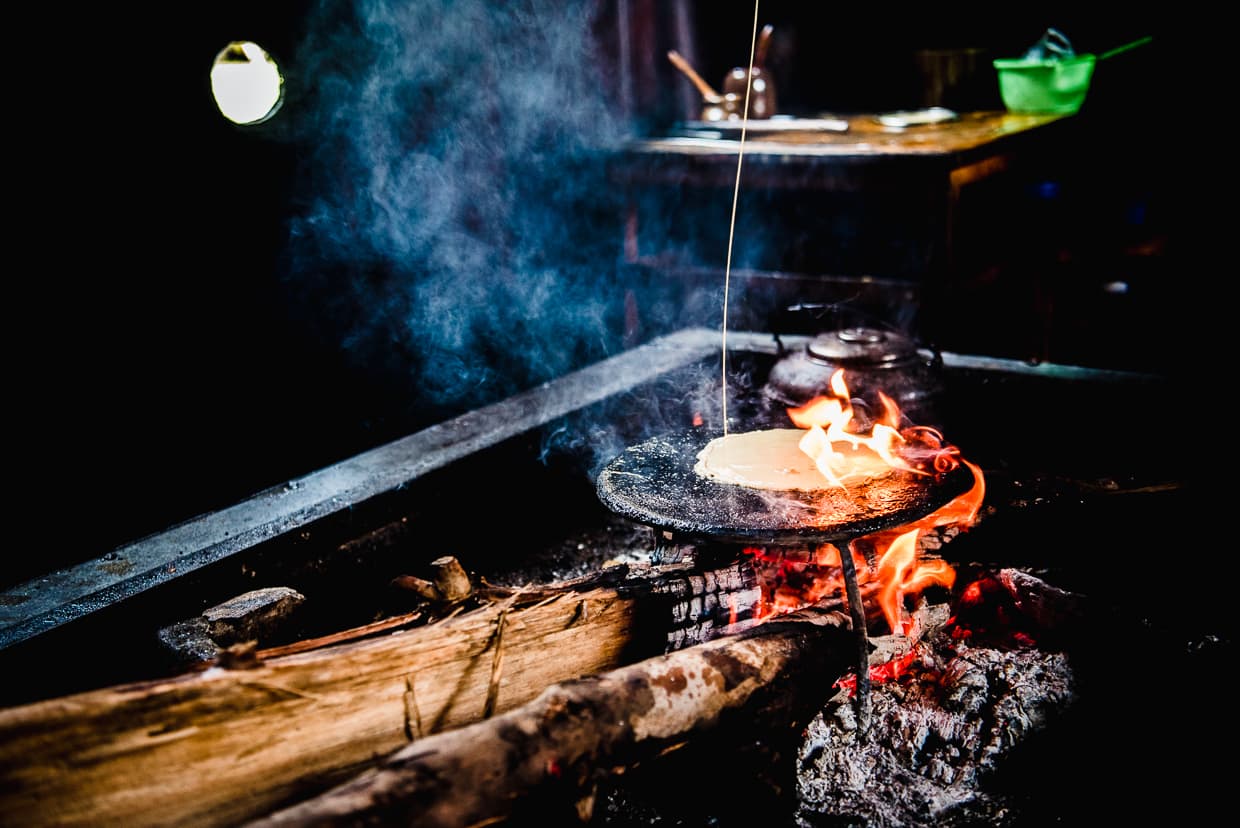

What made the experience fun, though, was watching them cook it on a cool griddle over an open fire pit. The pancakes are made to order, and they make a nice little show of it, pouring the batter from a great height onto the hot metal, where the flames leap up around it. It didn’t hurt that the lighting inside was really nice for this kind of photography.
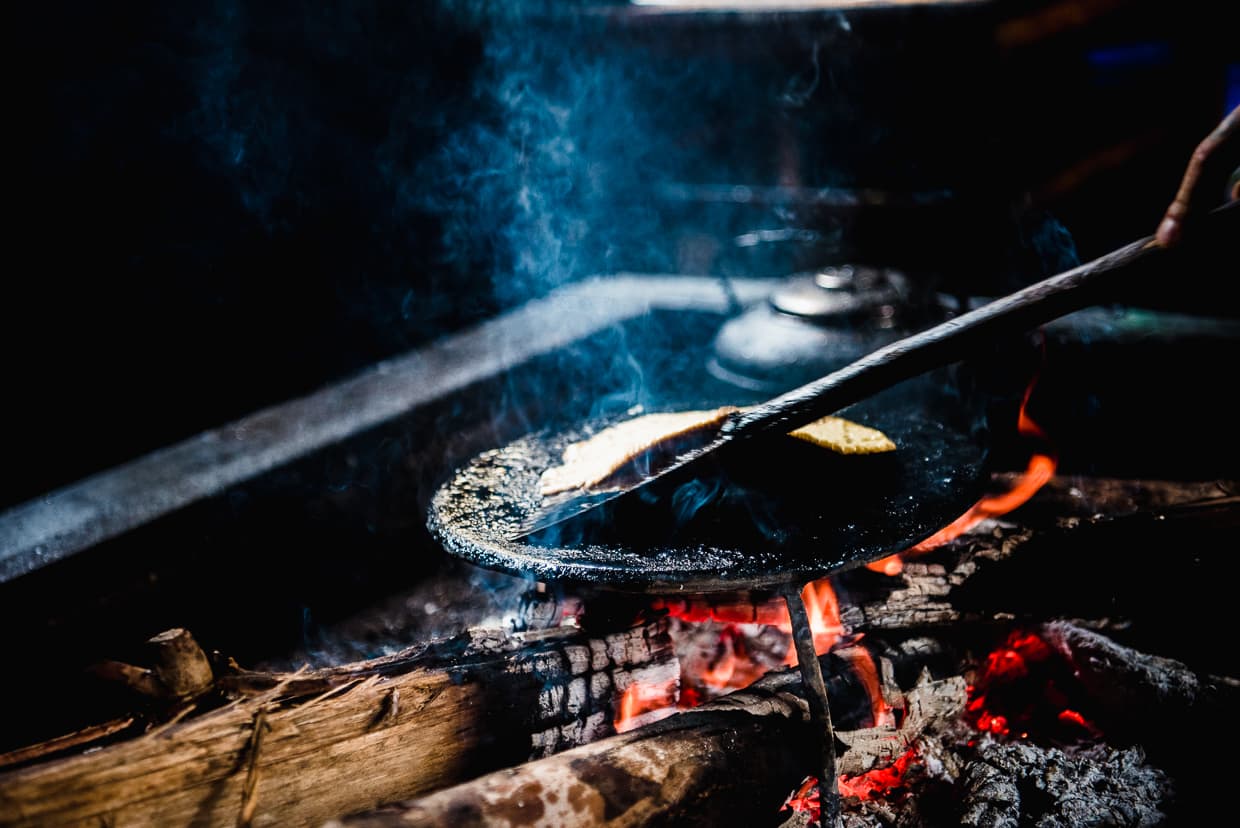
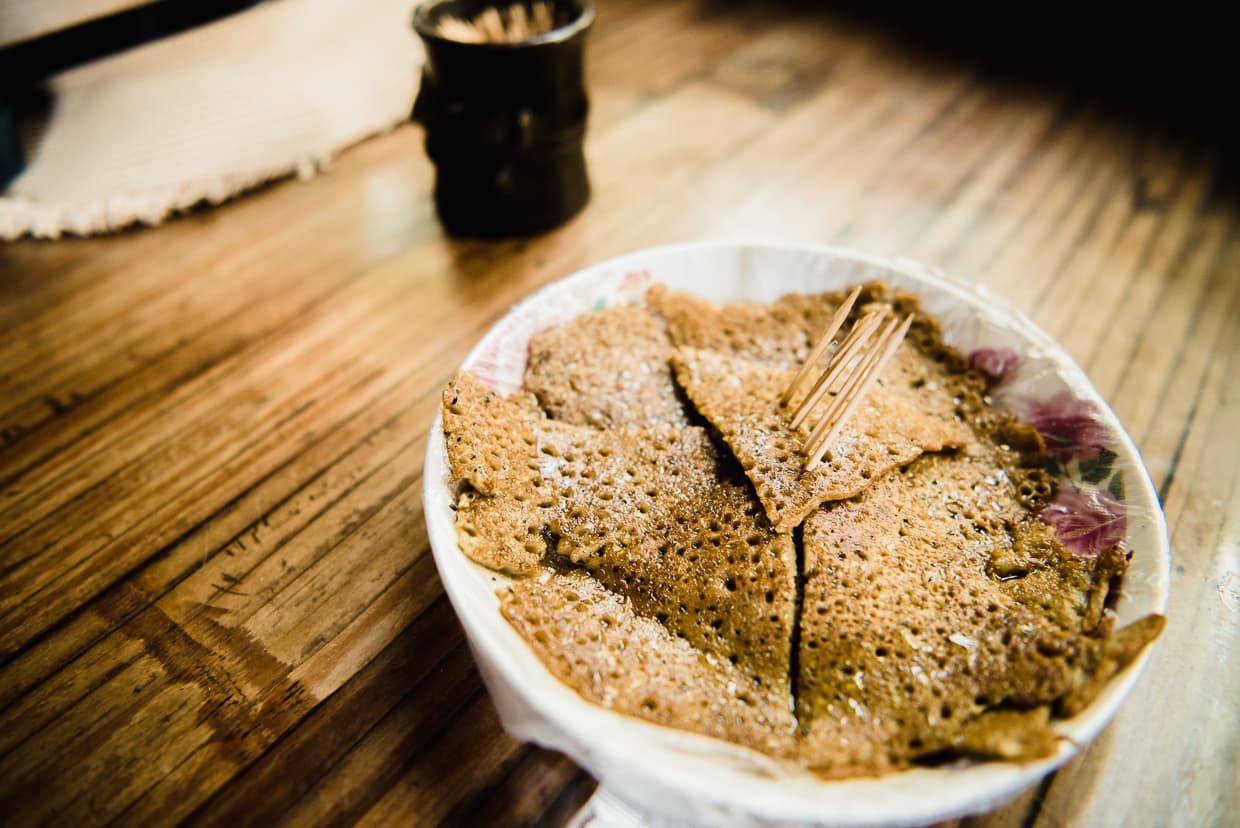
Our Least Favorite Activity
(By a wide margin)
The Elephant Show
So, we probably should have known that we wouldn’t like the elephant show, but we had sort of a brain fart and bought tickets anyway. China isn’t known for its strict animal cruelty laws, and its zoos are notorious. Elephants are also among the most abused animals in the world, both by poachers, and by organizations that exploit them to entertain tourists who don’t know any better.
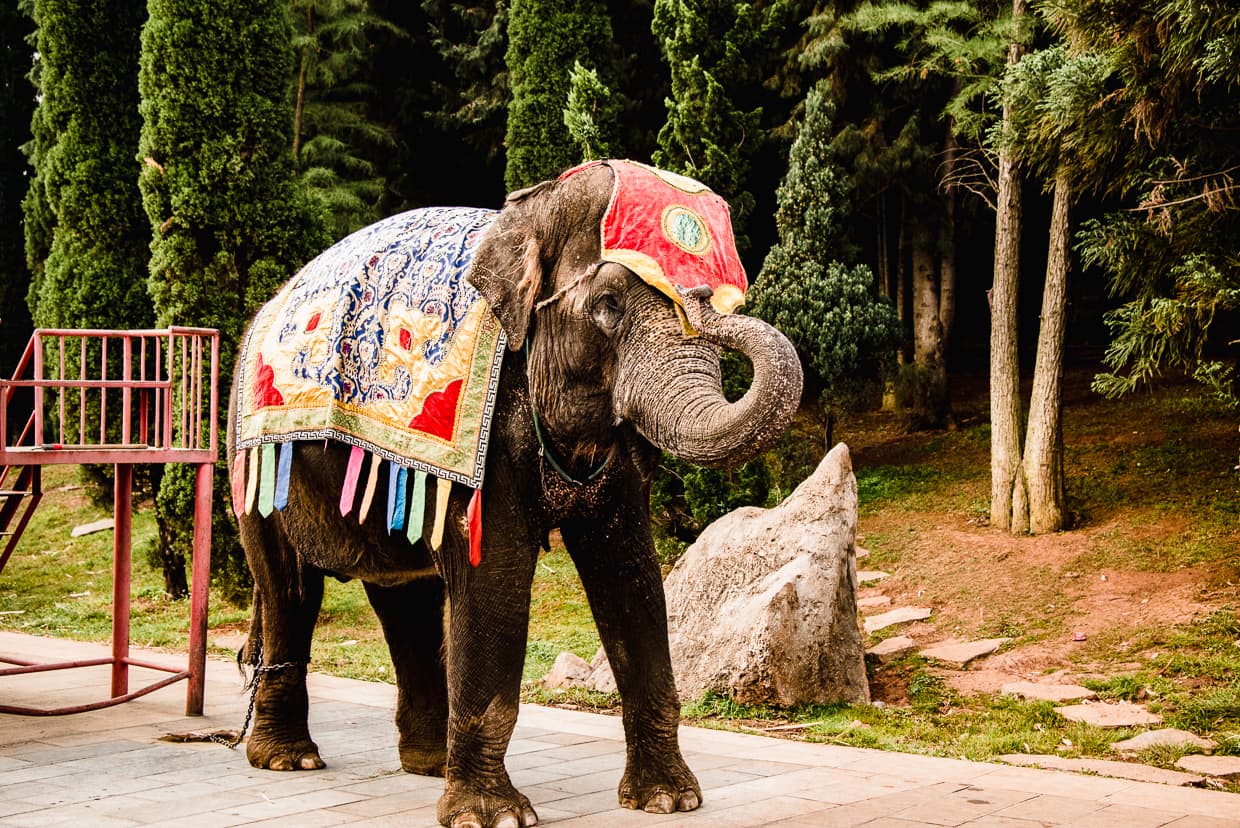
When we first got to the outdoor theater, there were some elephants tied up near the bleachers where you could buy bananas to feed them. That seemed like fun, so we bought Lisa a bunch, and she really enjoyed watching the elephants reach their trunks out to grab a banana from her hand.
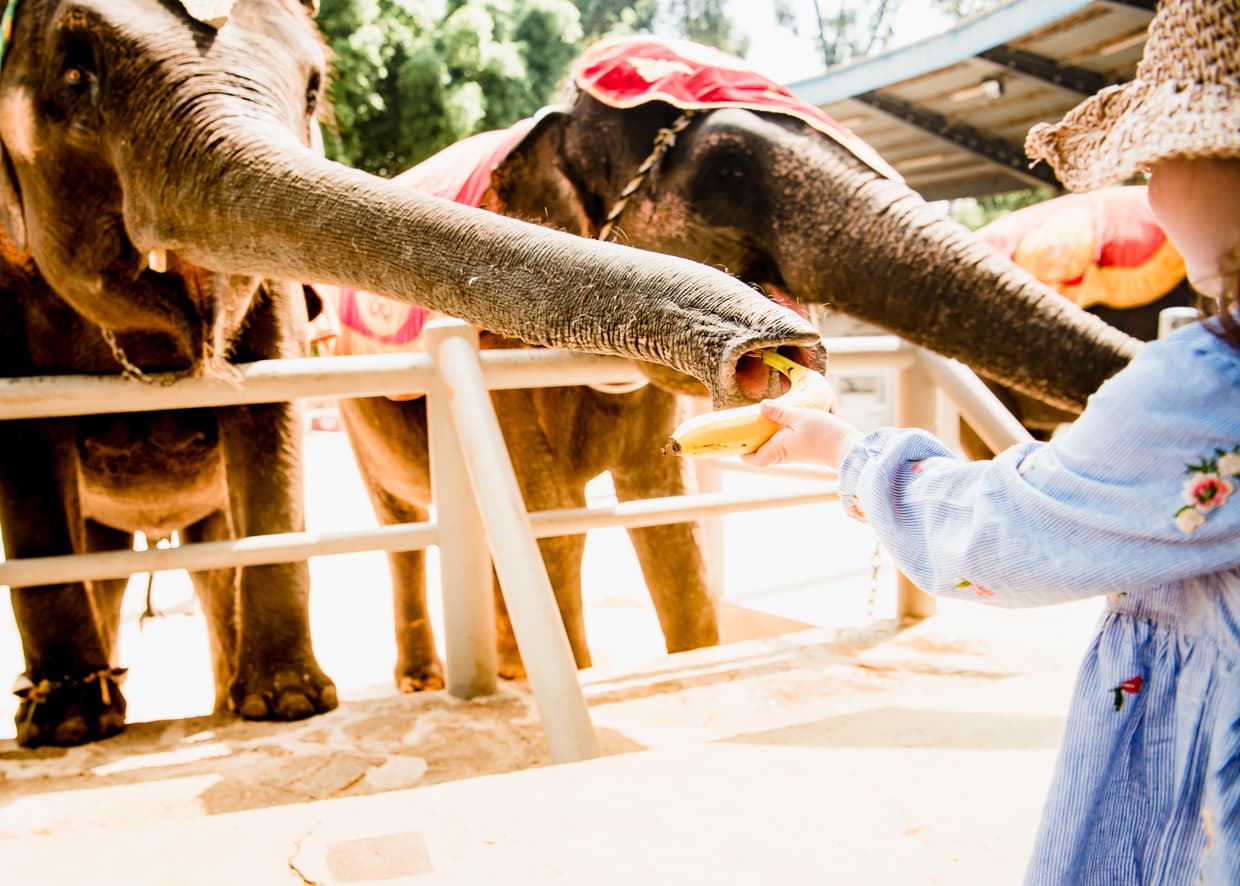
But once the show started, it became obvious what it was all about. The elephants walked onto the stage with men riding on their backs (painful and damaging to elephant spines), and then things got worse. The trainers invited tourists onto the stage to be lifted by the animals or to sit on them, and they had the elephants performing tricks that looked difficult for their physiology.
Things like standing with all of their feet on a small platform are not normal elephant behavior, and I can’t imagine what the training must have entailed. I am thinking it was more sticks than carrots. Indeed, there was one very young elephant that seemed to still be learning, and the trainers kept yanking on its ears to make it move.
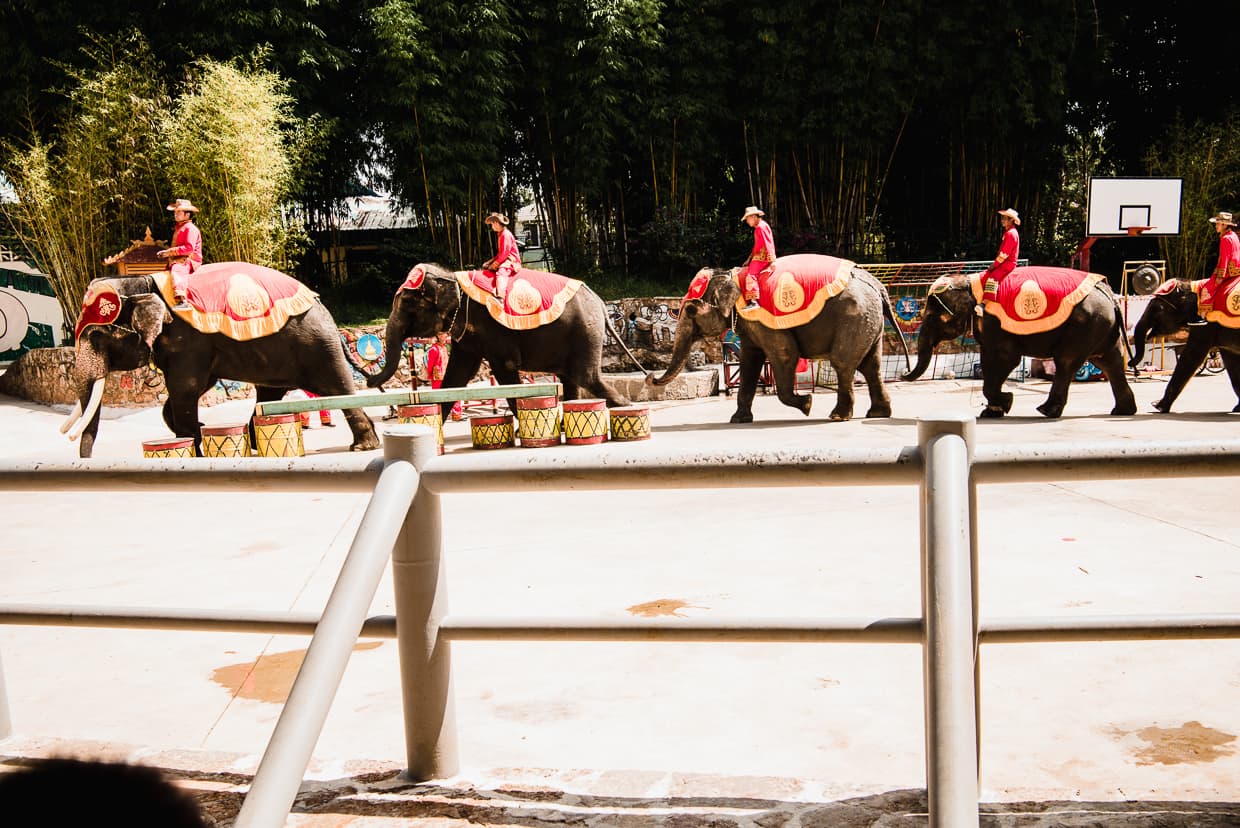
We wound up walking out of the show after five minutes, feeling a little sick. The most disturbing part was seeing that at first Lisa was clapping along and giggling with all the other tourists who were enjoying the show. Eventually, after seeing the looks on our faces, she clearly picked up on the fact that something was wrong, and she was eager to leave with us. I don’t know exactly what we were expecting - maybe for the elephants to just walk out, receive a feeding, and have someone talk about them for a bit while they did their own thing - but we wound up feeling very naive and complicit.
Tips for Enjoying Your Visit to the Yunnan Ethnic Village
What to Bring
- Sunblock - The Ethnic Village has more shade than a lot of attractions we’ve visited in China, but there’s still a lot of exposed area. We all use this baby safe sunblock when we’re out and about.
- Camera - You want photos, right? We brought our Nikon D810 and two lenses, a 24-70mm and a 70-200mm (though we used the former more than the latter this time). For a more complete list of the stuff we travel with, visit our shop.
- Snacks and Water - You need energy to explore, so it never hurts to have a little food and a bottle of water with you if you are spending a day at the park. There are restaurants there, but if you can’t find anything you like, or if you get hungry when you aren’t near a restaurant, it’s nice to have the option.
- Cash - I don’t think the ticket office takes American credit cards, and I’m sure the vendors inside the park don’t. If you really don’t want to carry cash around with you, you could always sign up for WeChat pay (see our must have apps for China) and pay with your phone.
- Phone With Google Translate - Though this attraction is fairly foreigner friendly, it couldn’t hurt to make sure you have a translator with you. The nice thing about Google Translate is that you can use its speech function for easier communications with live people. It’s not perfect though.
Explore on Foot
There are various transportation options available once you are inside the park:
4 seat bike: 100RMB for 3 hours.
Electric cart for 2 people: 80RMB per hour.
There’s also a little red train that runs by some of the more popular parts of the park. It’s 20RMB per person and you can hop on or off five times. That was the only transportation we tried, and we didn’t really think it was worth it. Unless you really aren’t able to walk much, you’ll find that the Yunnan Ethnic Village is a pretty easy and enjoyable place to stroll around.
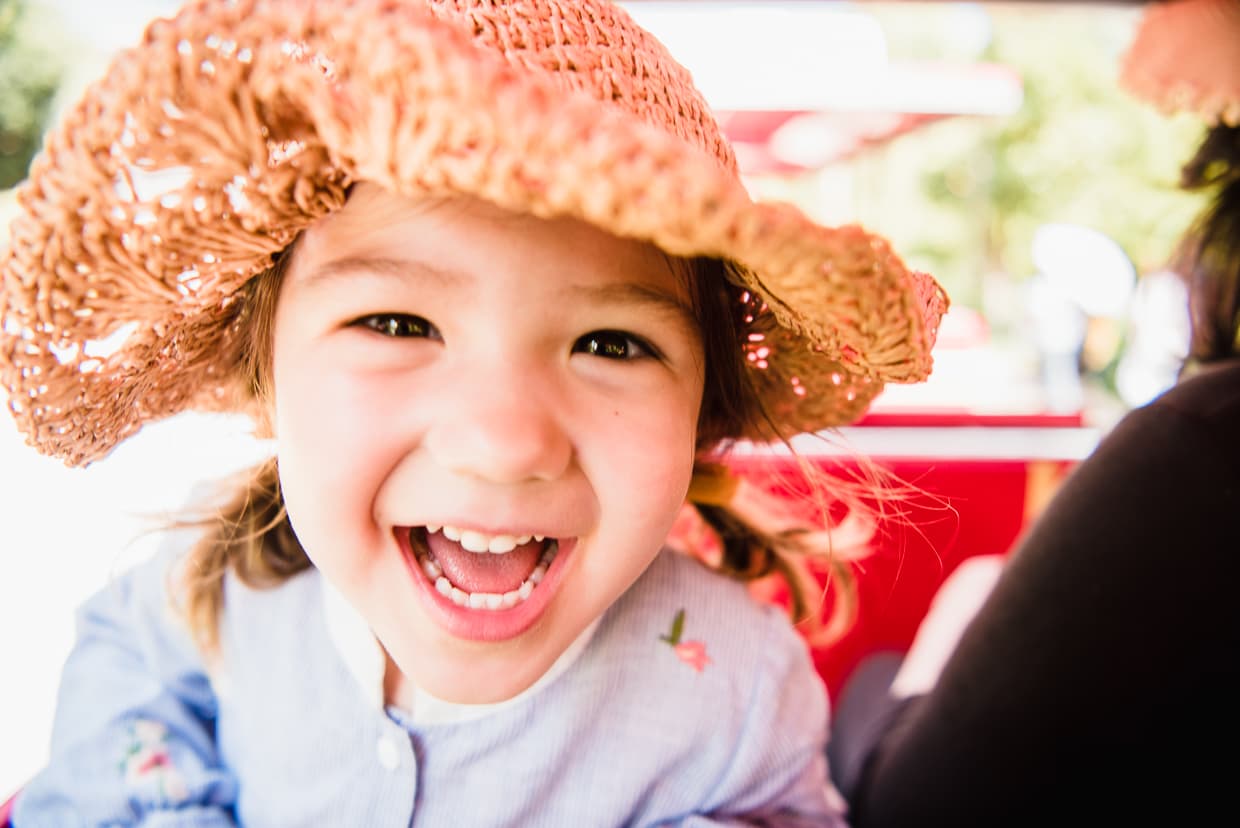
The only time we ever rented an electric cart to explore the inside of a park was that cold fall day when we only had a day to photograph all of Versailles.
Grab a Map
There are maps available near the entrance. Get one. It’s not hard to get disoriented, and being able to see which village you are at and which way you need to go next is a must. It also shows where the restaurants and bathrooms are. Oh, that reminds me, be aware that you might have to use a squat toilet. Enjoy!
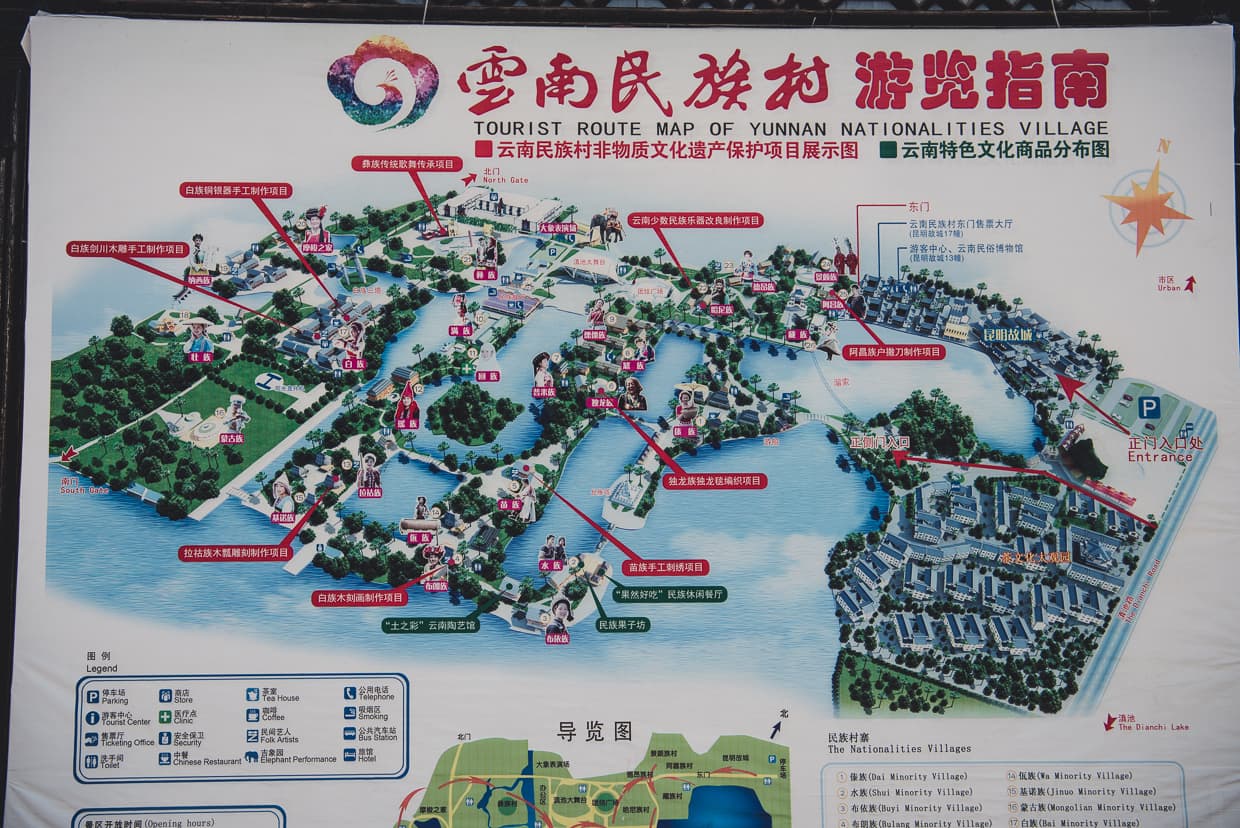
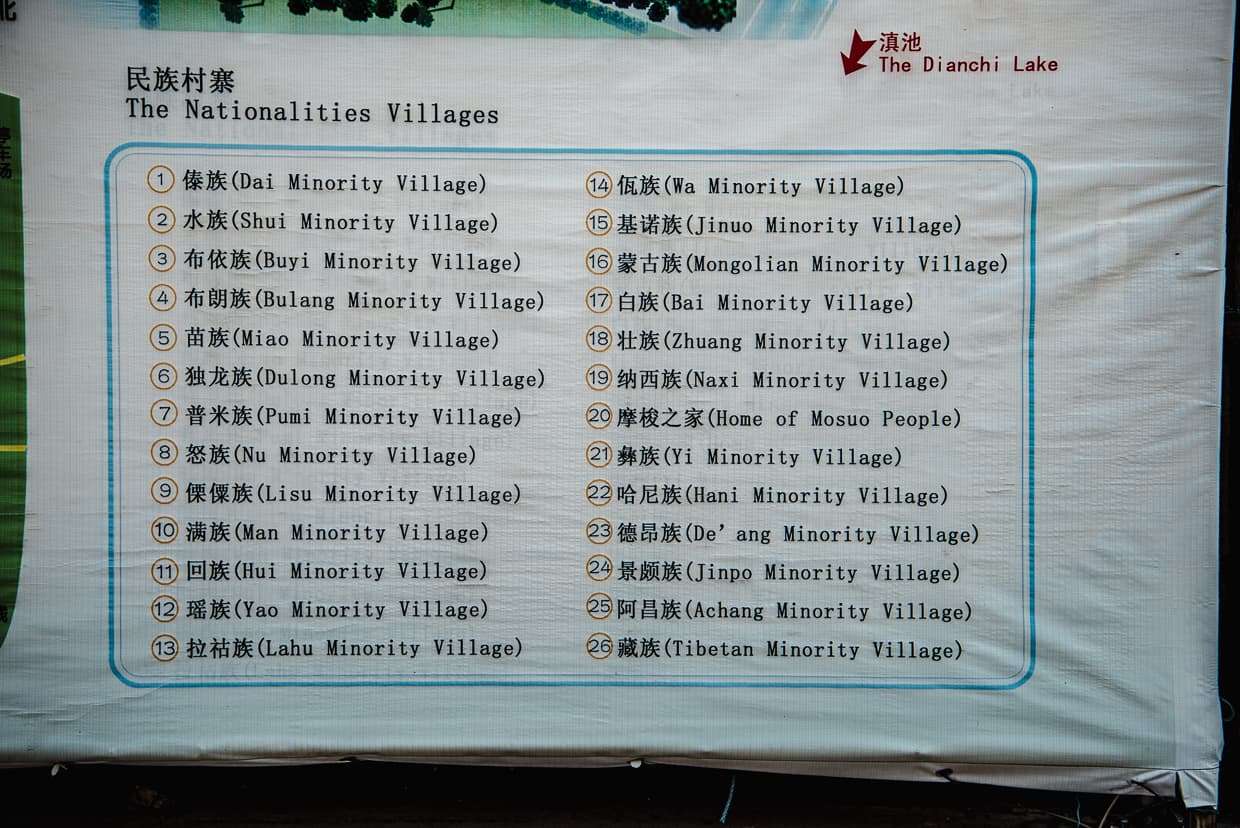
It’s Stroller Friendly
Except for one little bridge with steps we had to go over in the Dai village, the Yunnan Ethnic Village is almost entirely stroller friendly. I hesitate to call it handicap accessible only because we weren’t on the lookout for obstacles and we could easily have missed some. Certainly the insides of some of the villages had doorsteps and whatnot, but the roads than ran throughout the park were nice and smooth.
Lisa took a short nap in her stroller (read our review of the Babyzen Yoyo travel stroller) while we were there, but she somehow woke up as we were rolling past an ice-cream cart. What were the odds, huh? If strollers aren’t your think, also read our review of the Ergobaby Omni 360 baby carrier.
Conclusion
The Yunnan Ethnic Village is a fun way to familiarize yourself with the people and culture of Yunnan Province. If you won’t be venturing out of Kunming into the smaller cities and towns, this will be a great experience for you. If it’s your first time in China, you’ll also likely find it to be a family friendly and relaxing experience. The language barrier is minimal, since all of the signs and plaques around the park are translated to English, and most of the performances are highly visual.
Because the Ethnic Village is so close to the center of Kunming, so convenient to get to, and so easy to explore, we think its an ideal outing for westerners who want to get a taste of the region.
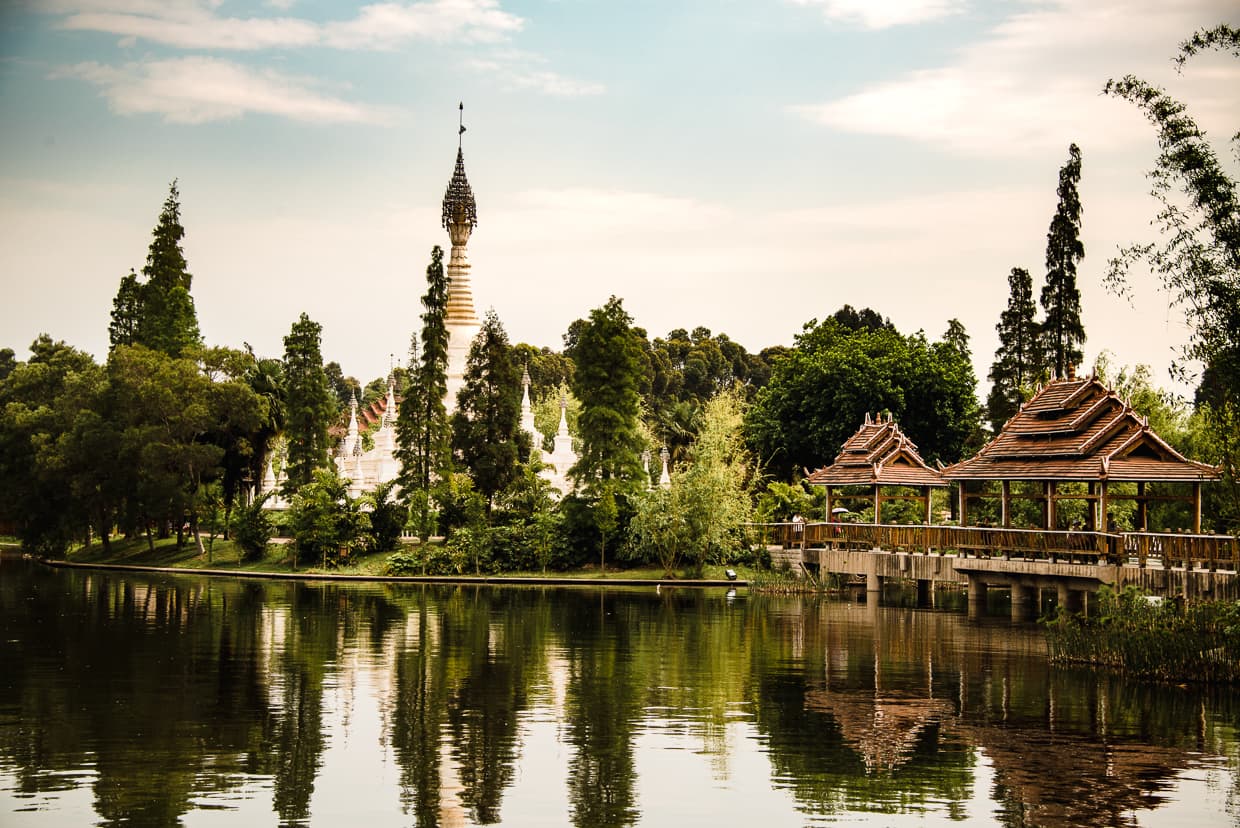
If you have any questions about the Yunnan Ethnic Village, please ask in the comments section below, and we’ll do our best to answer. We’d also love it if anyone else who has been there left any comments or corrections they might have for the benefit of our readers. If you enjoyed this article - and we hope that you have - you might want to have a look at our other content about Kunming, China, or nearby Dali, where we are living this year. Heck, you can check out every place we’ve been on our destinations page. Thanks for reading!
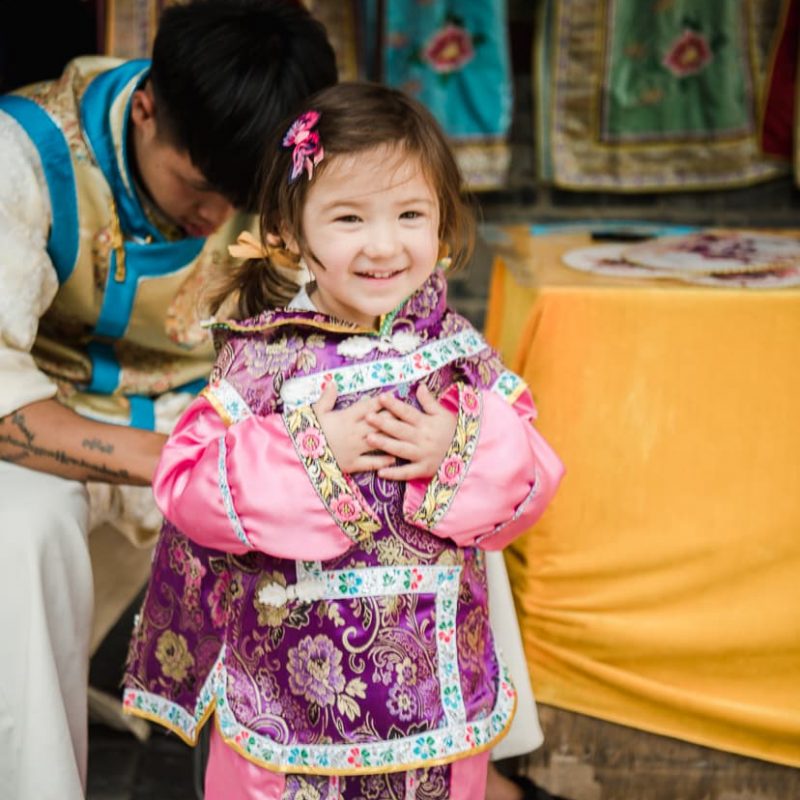
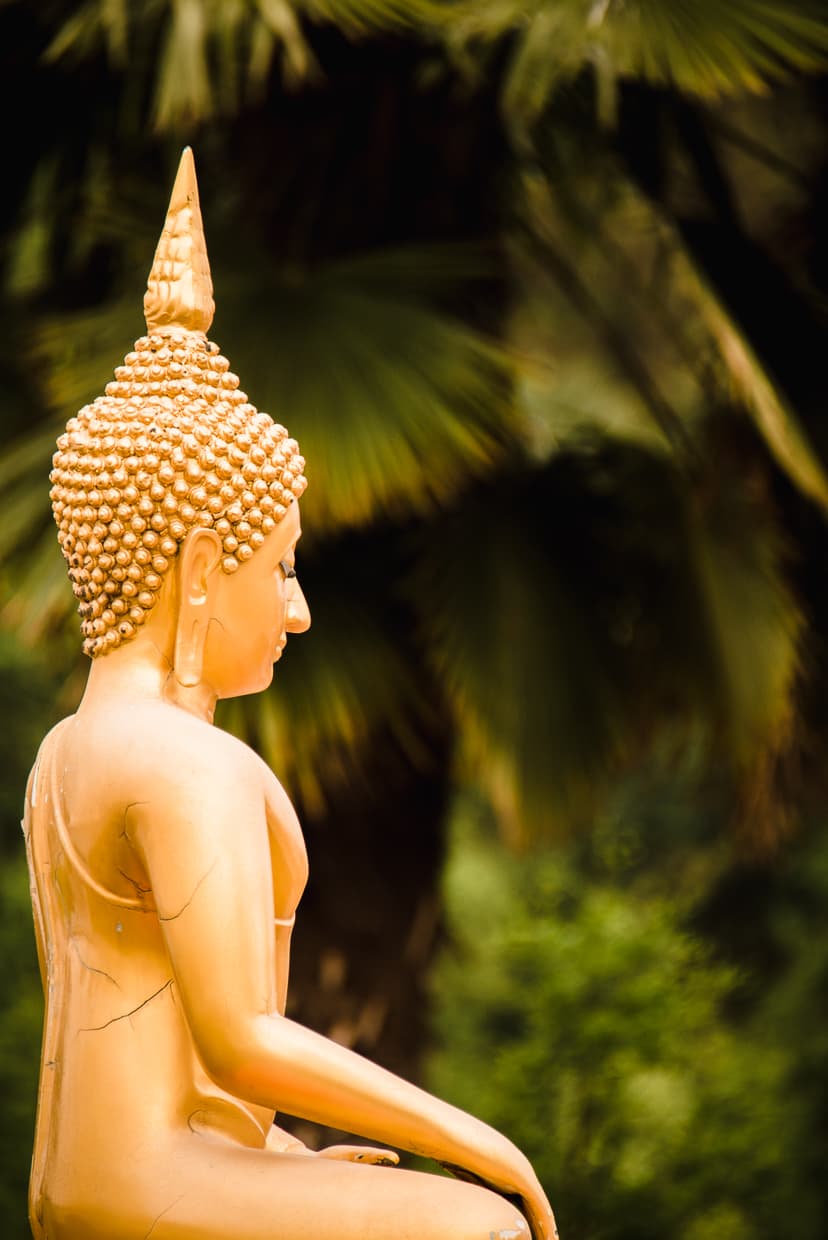

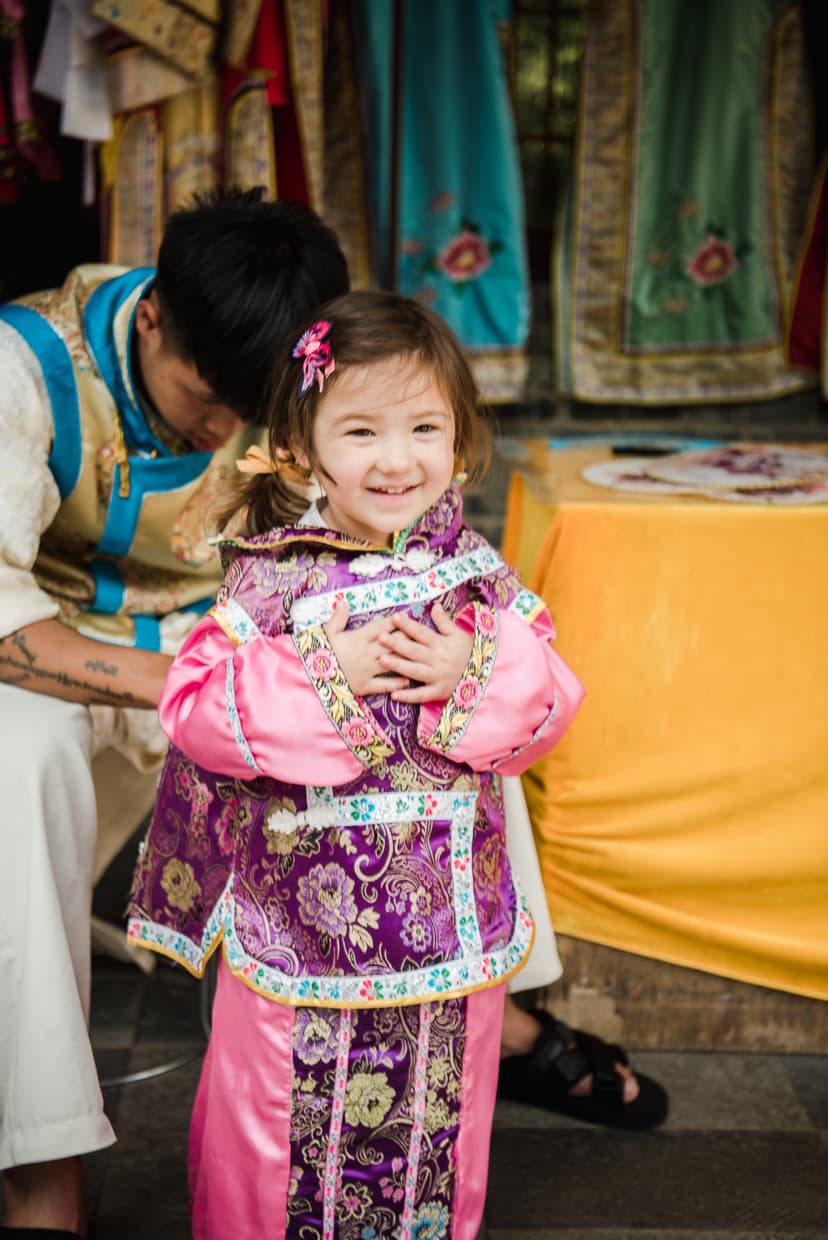



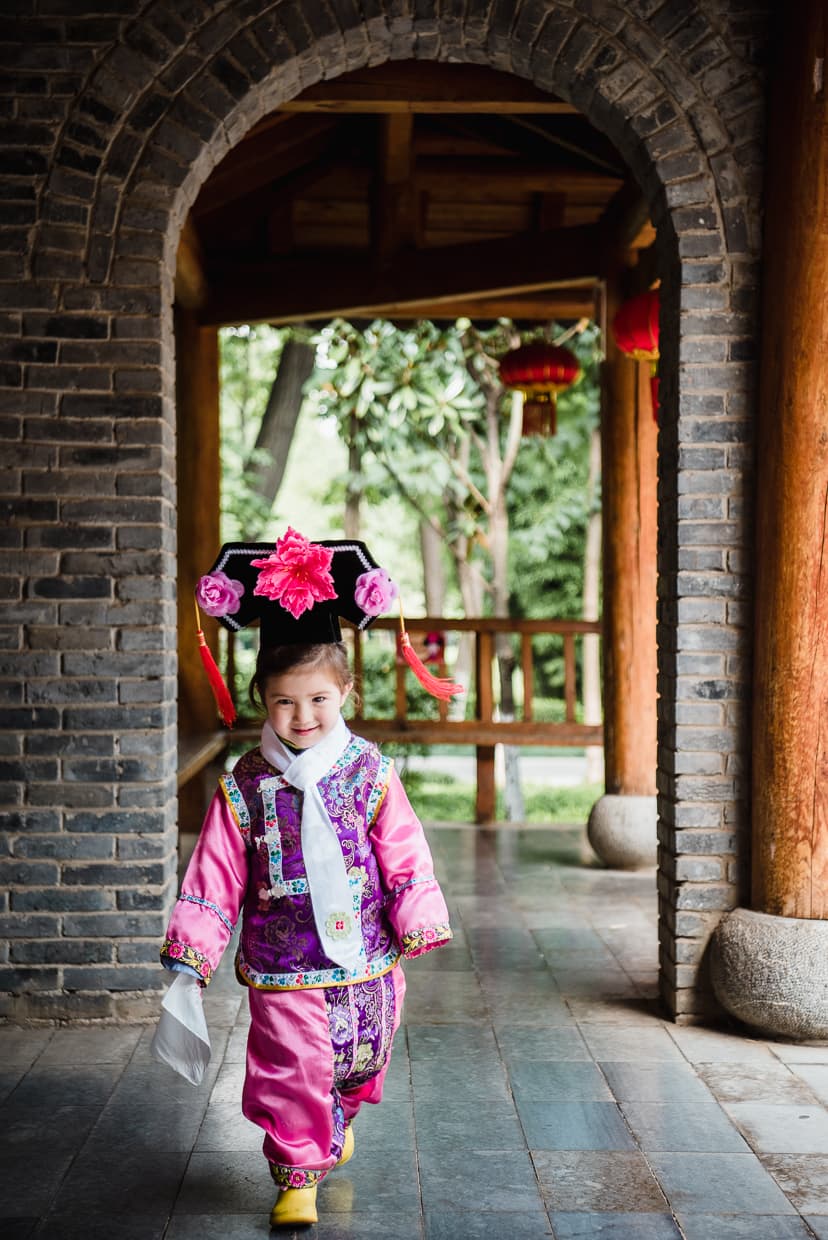
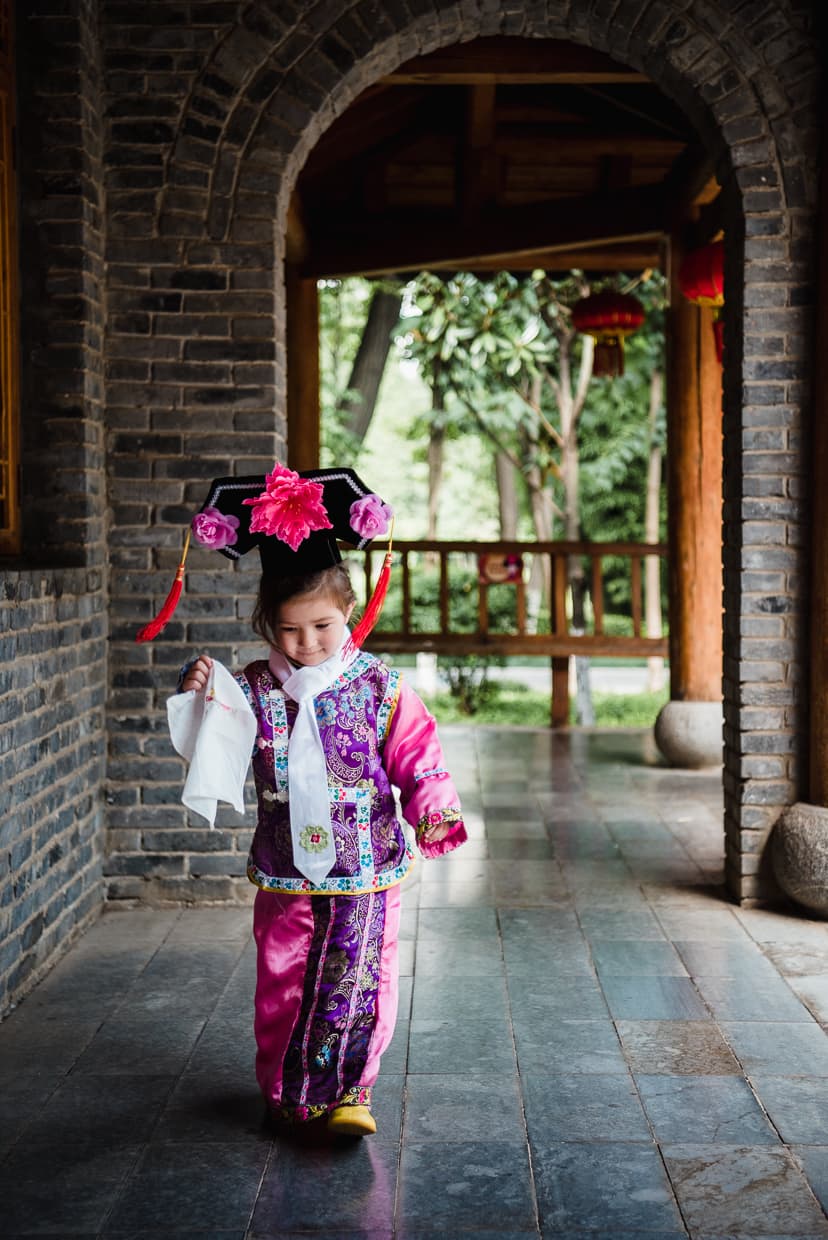
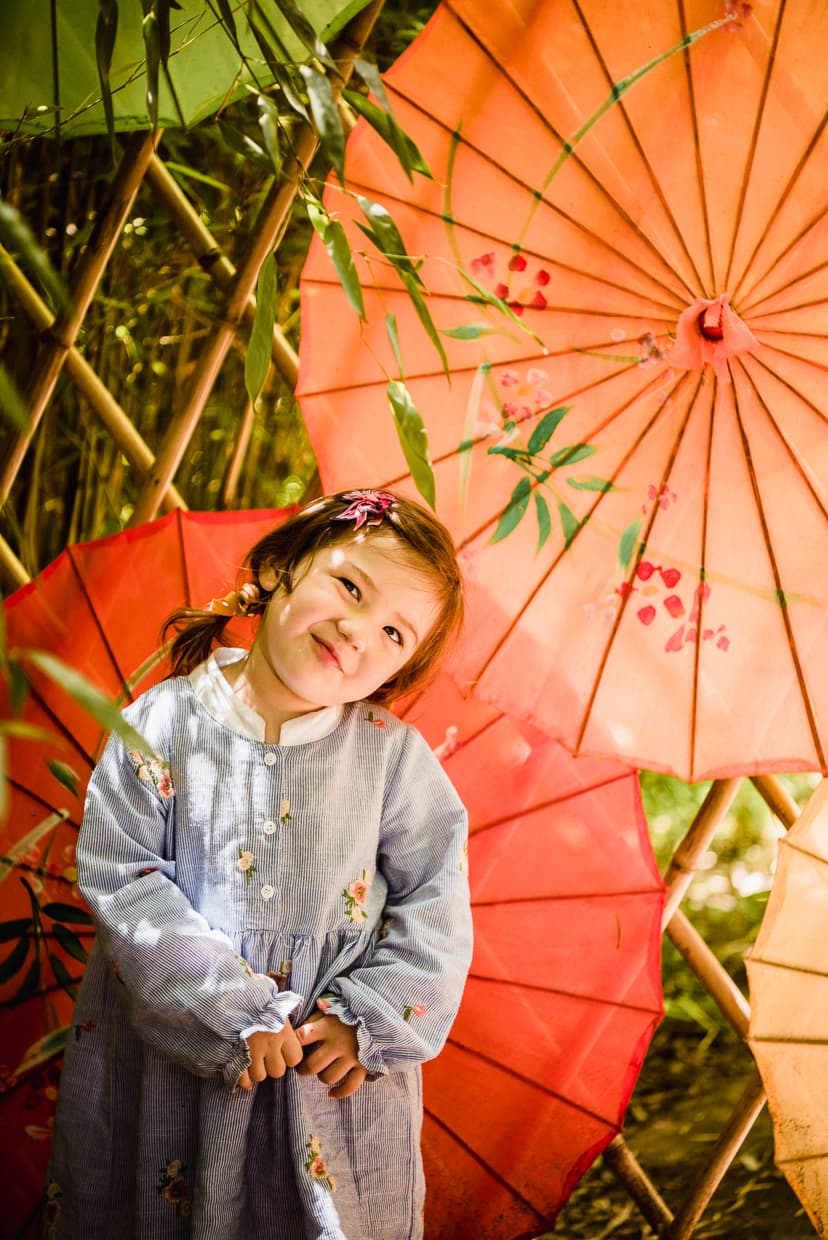
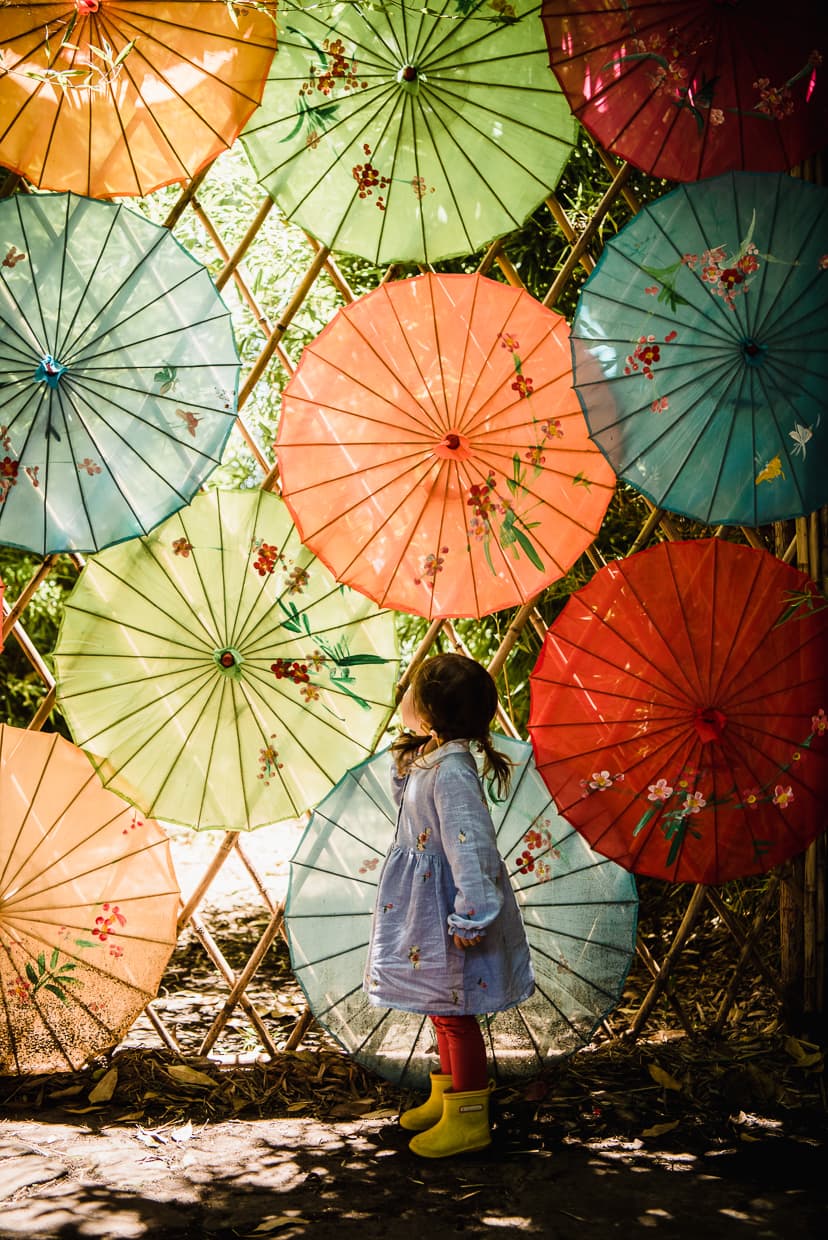

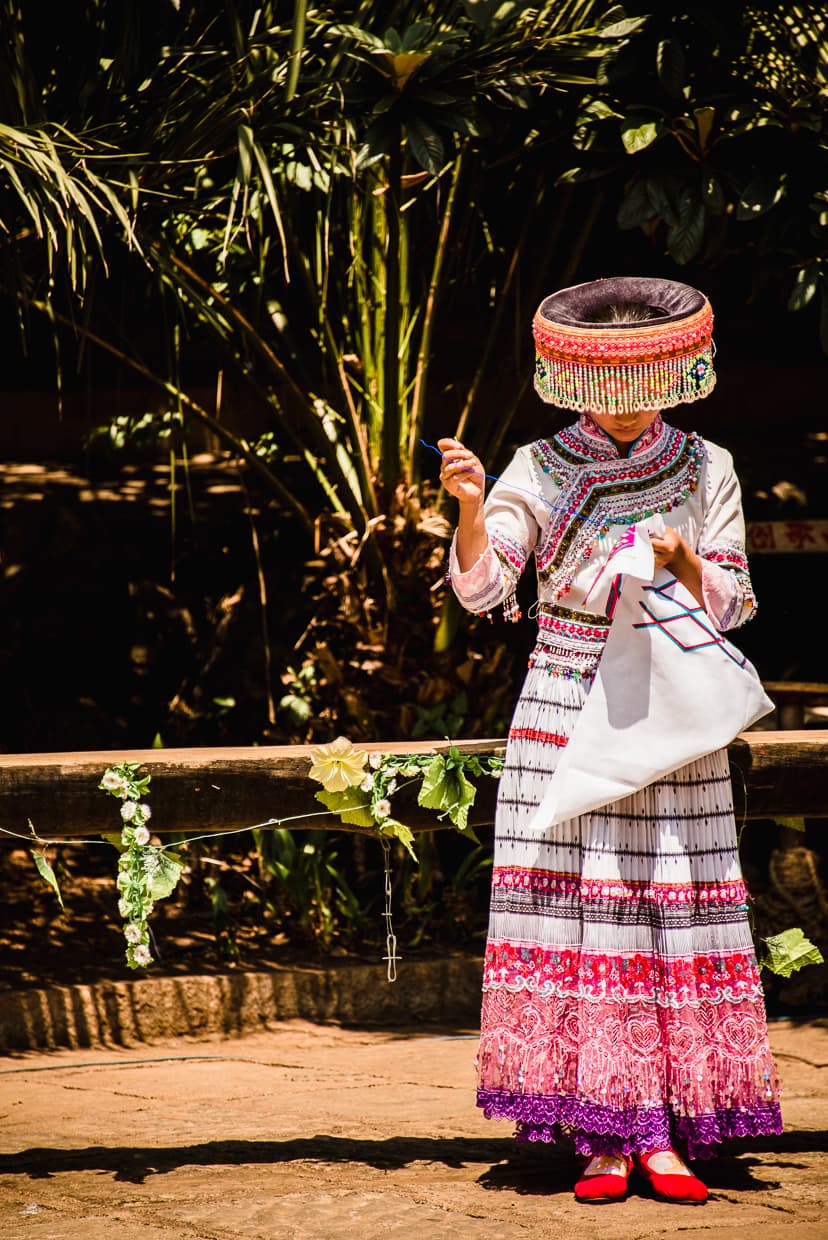
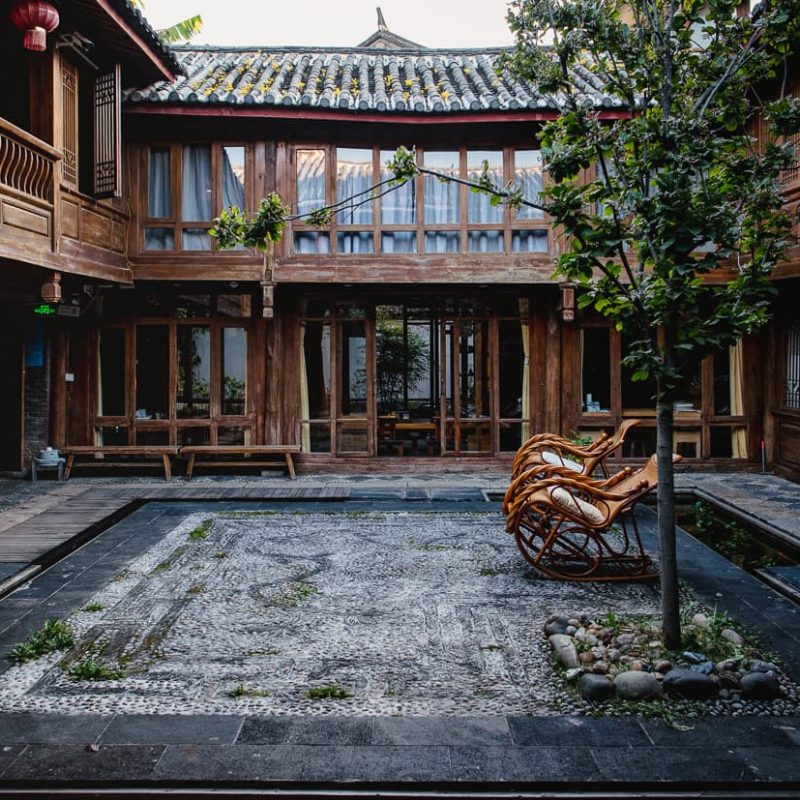
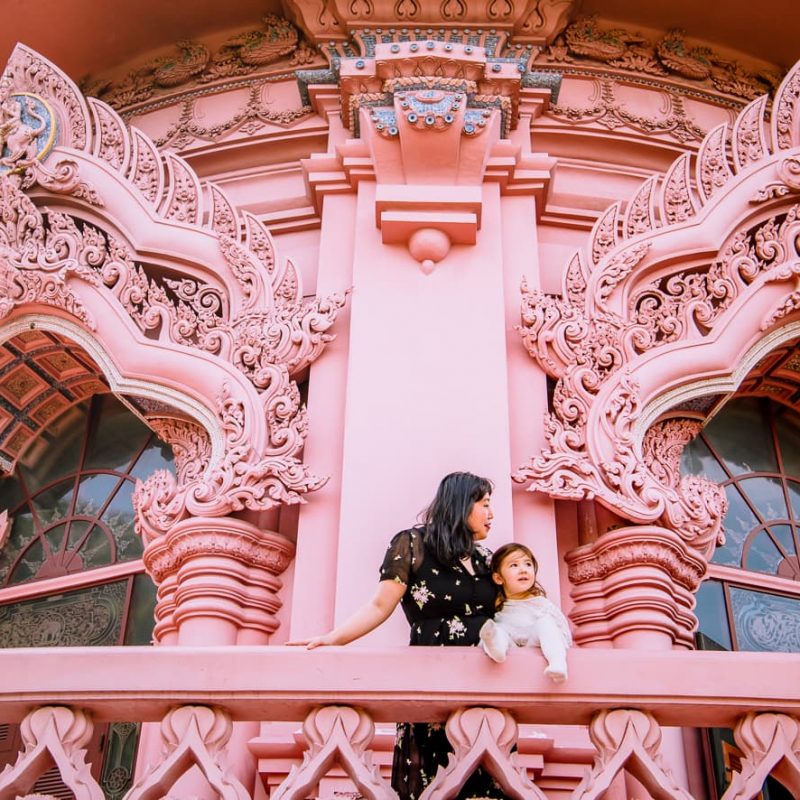

Leave a Reply